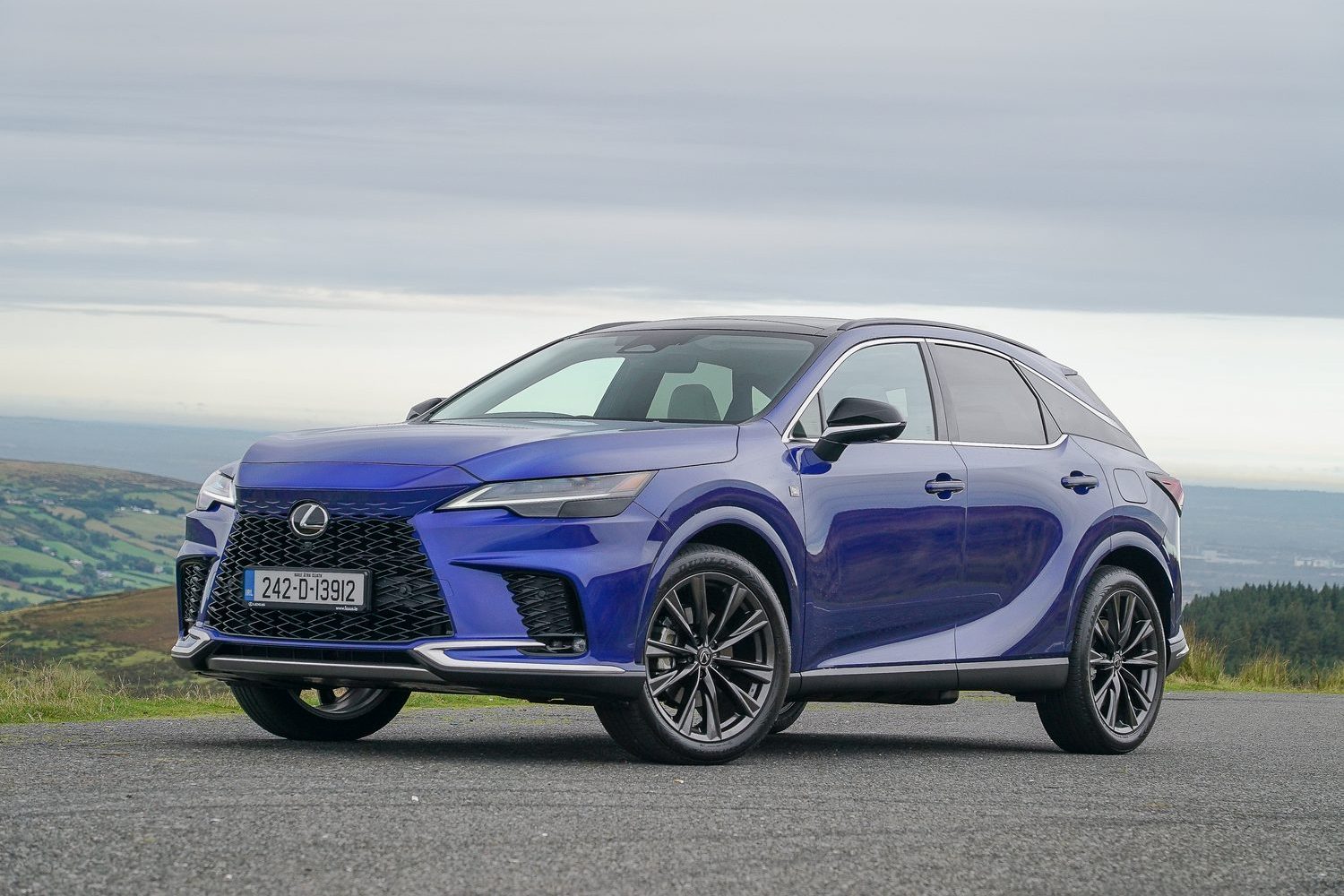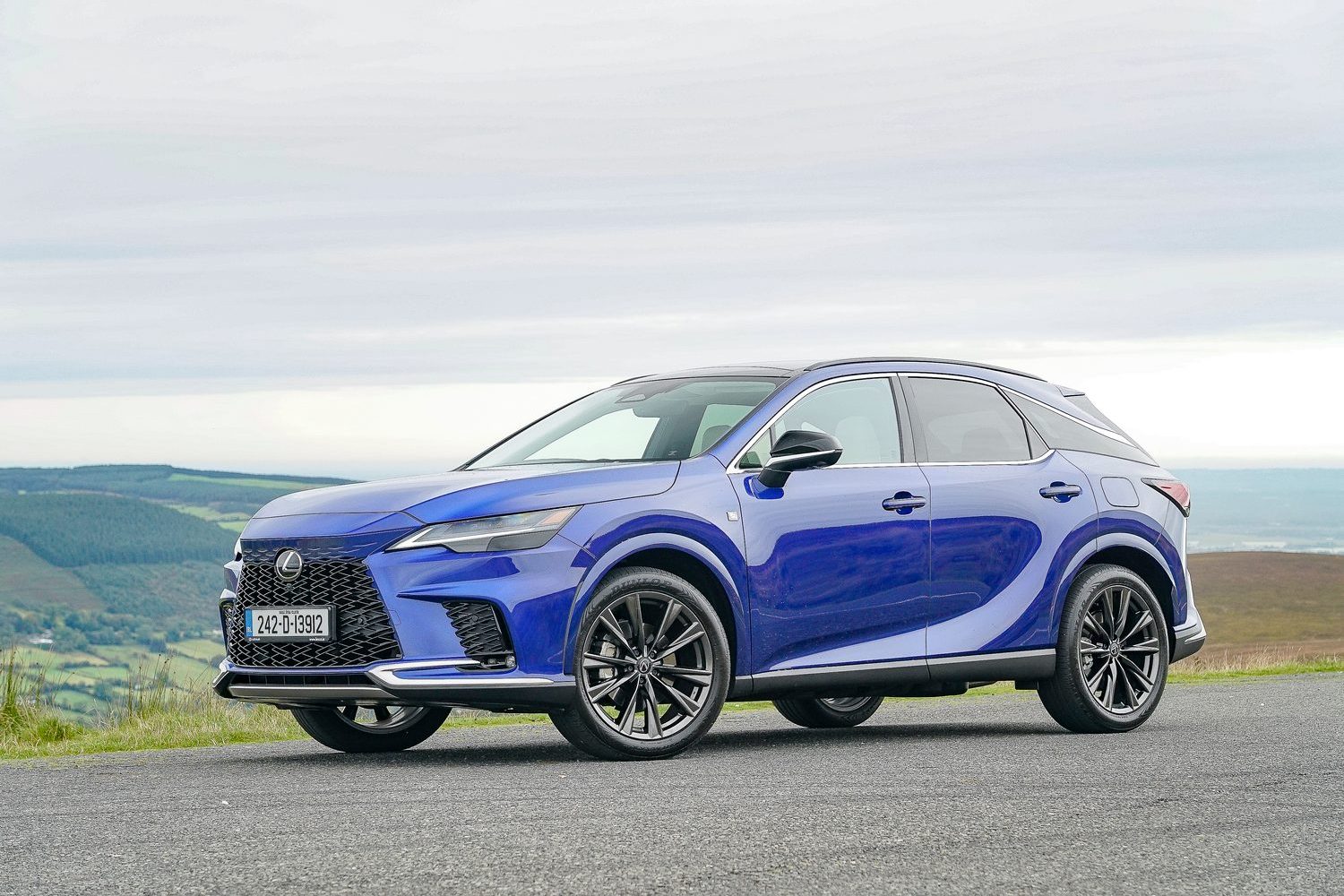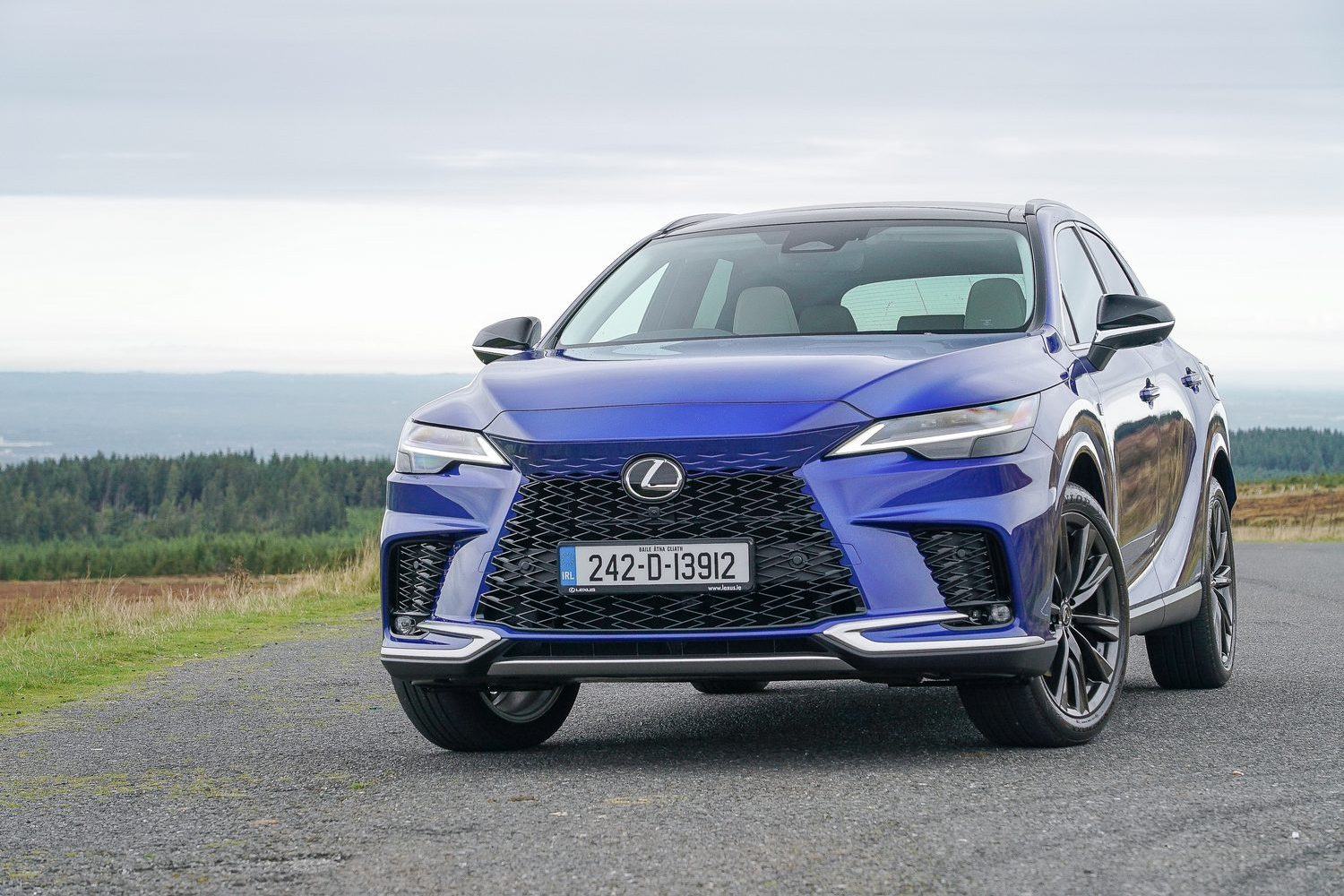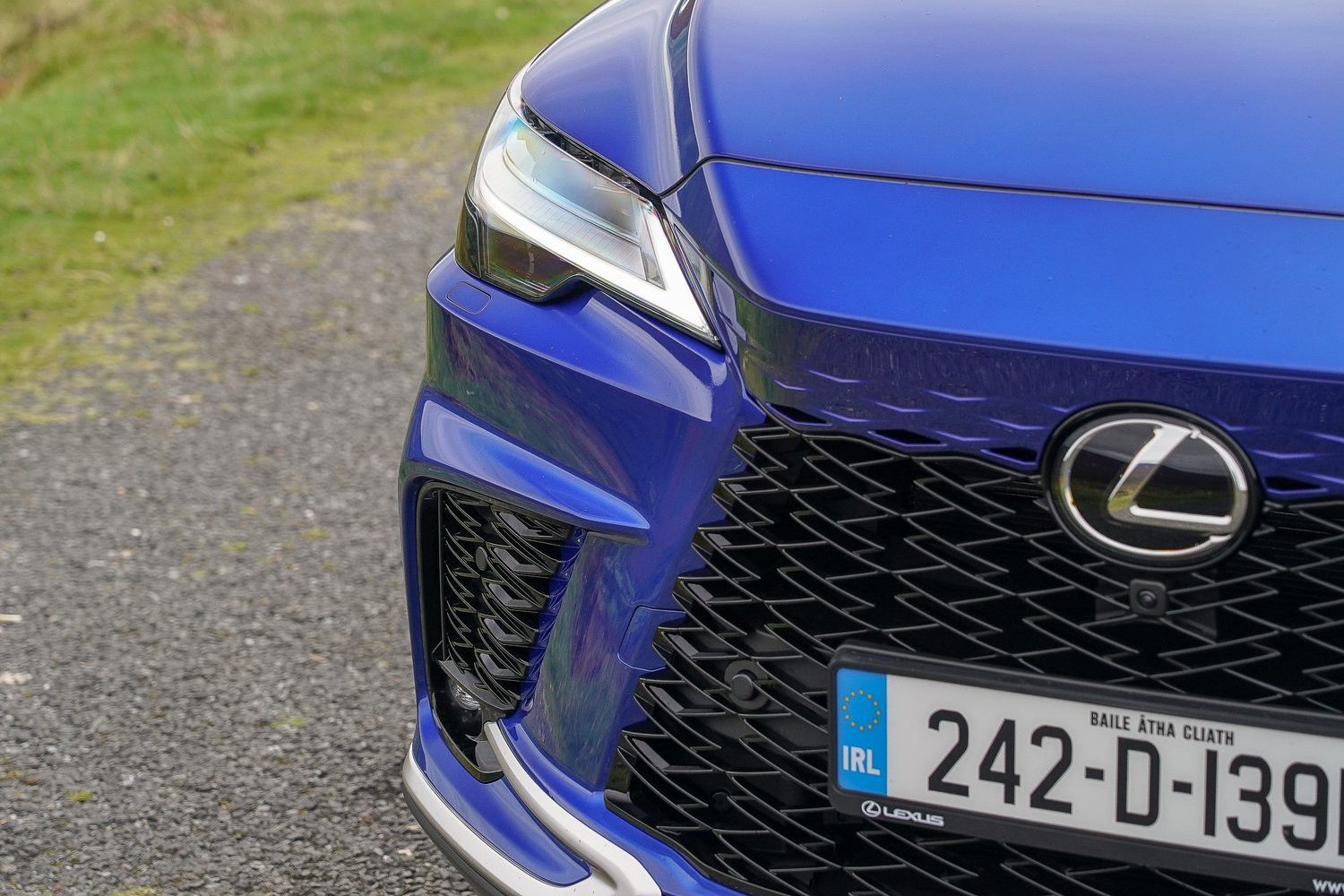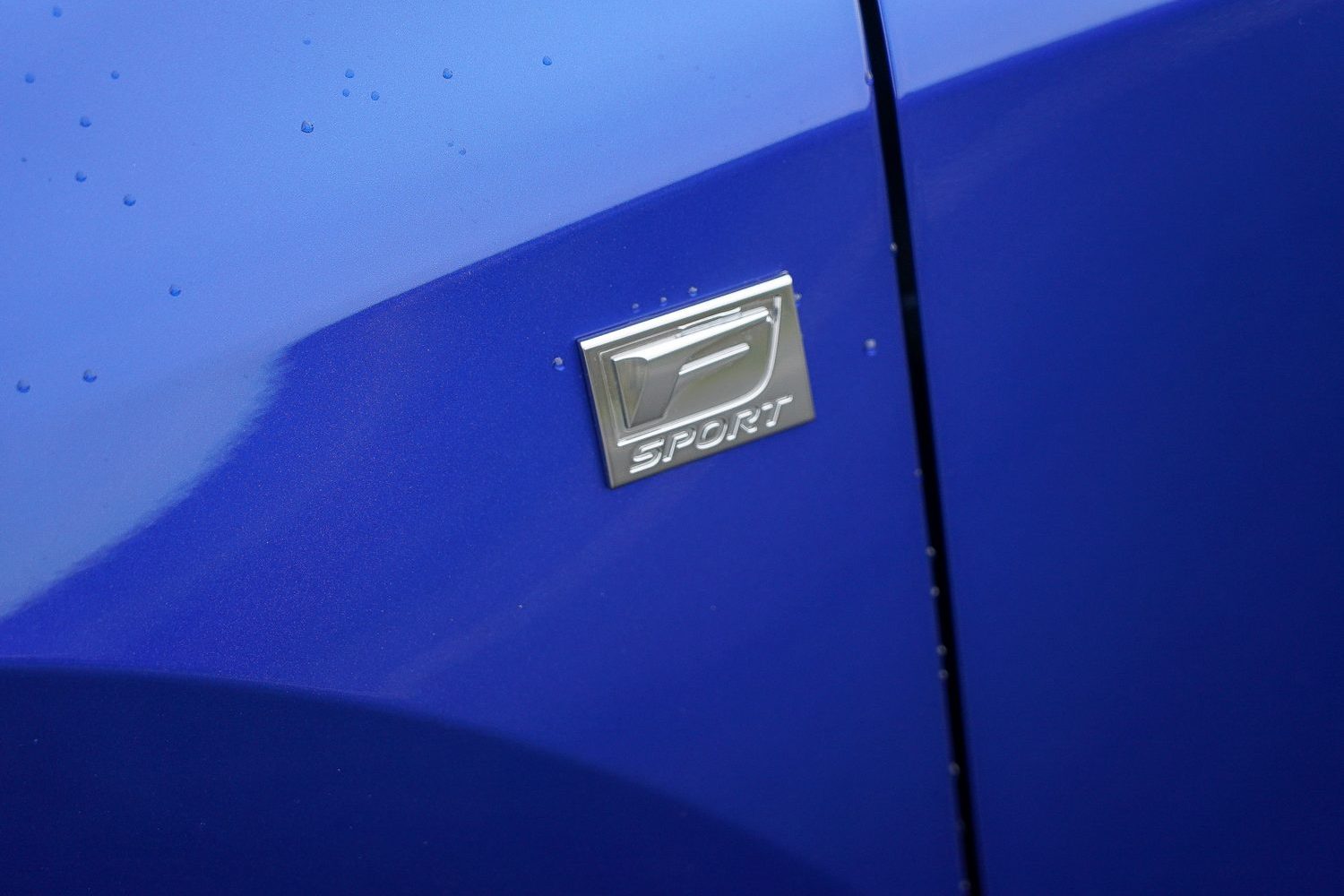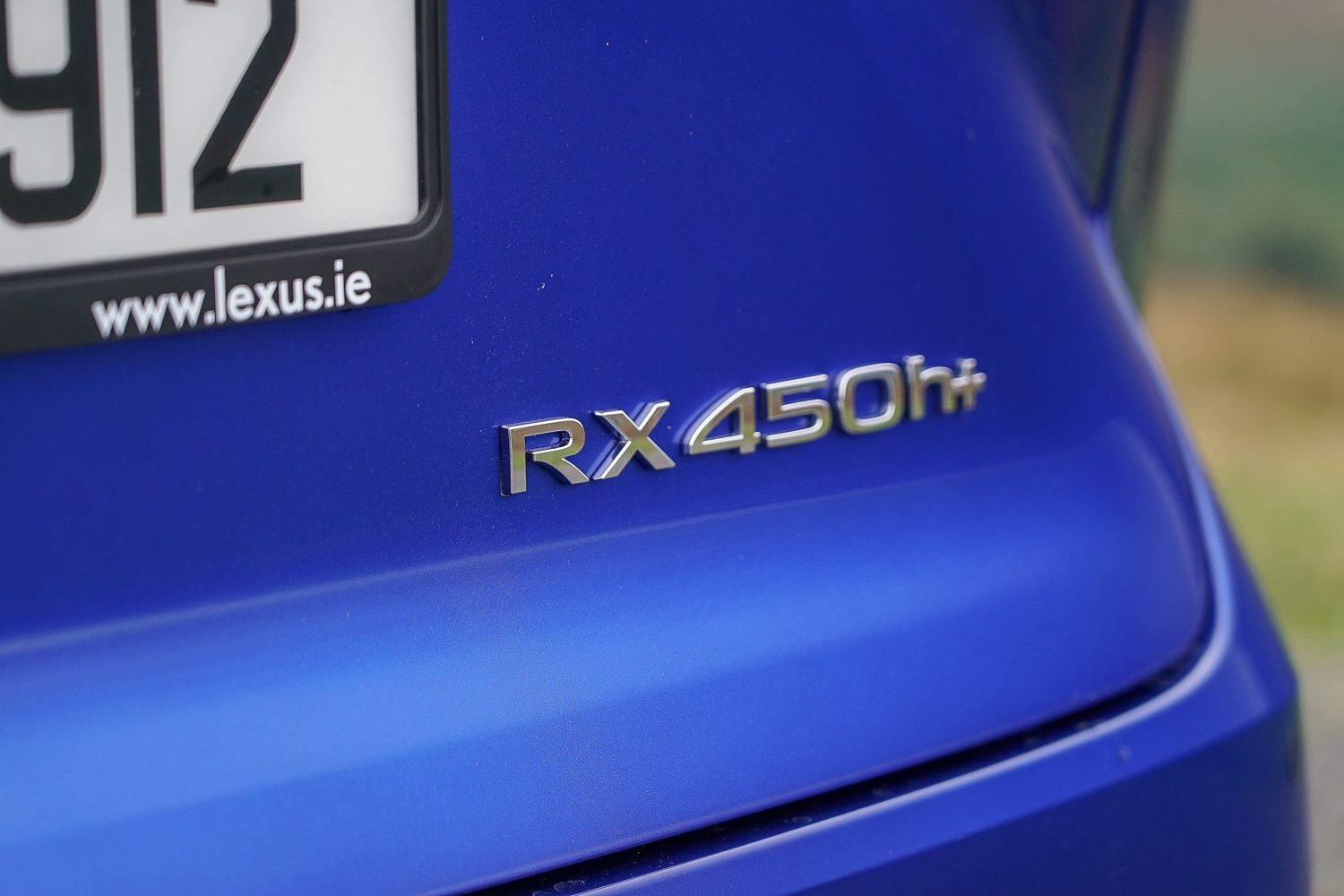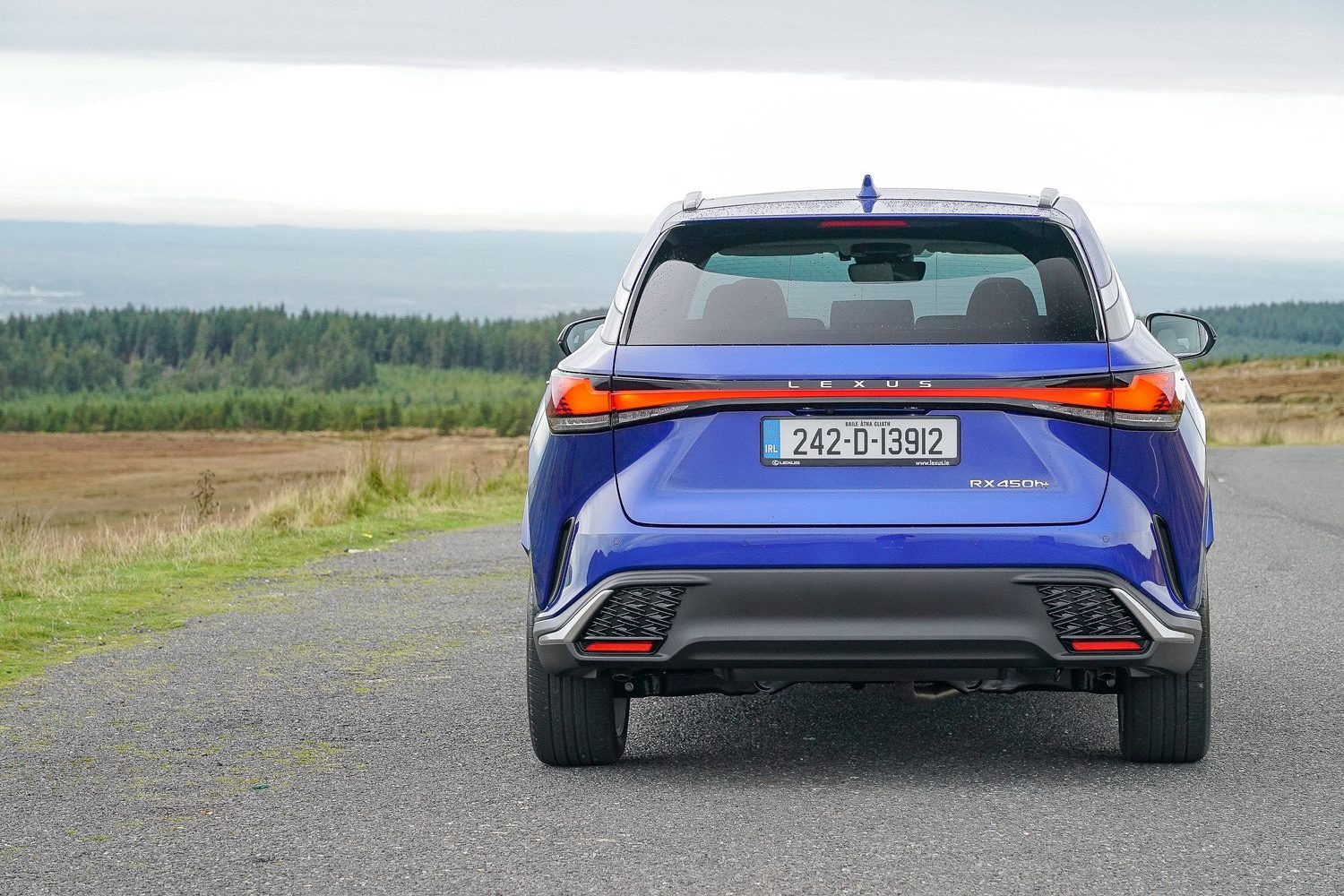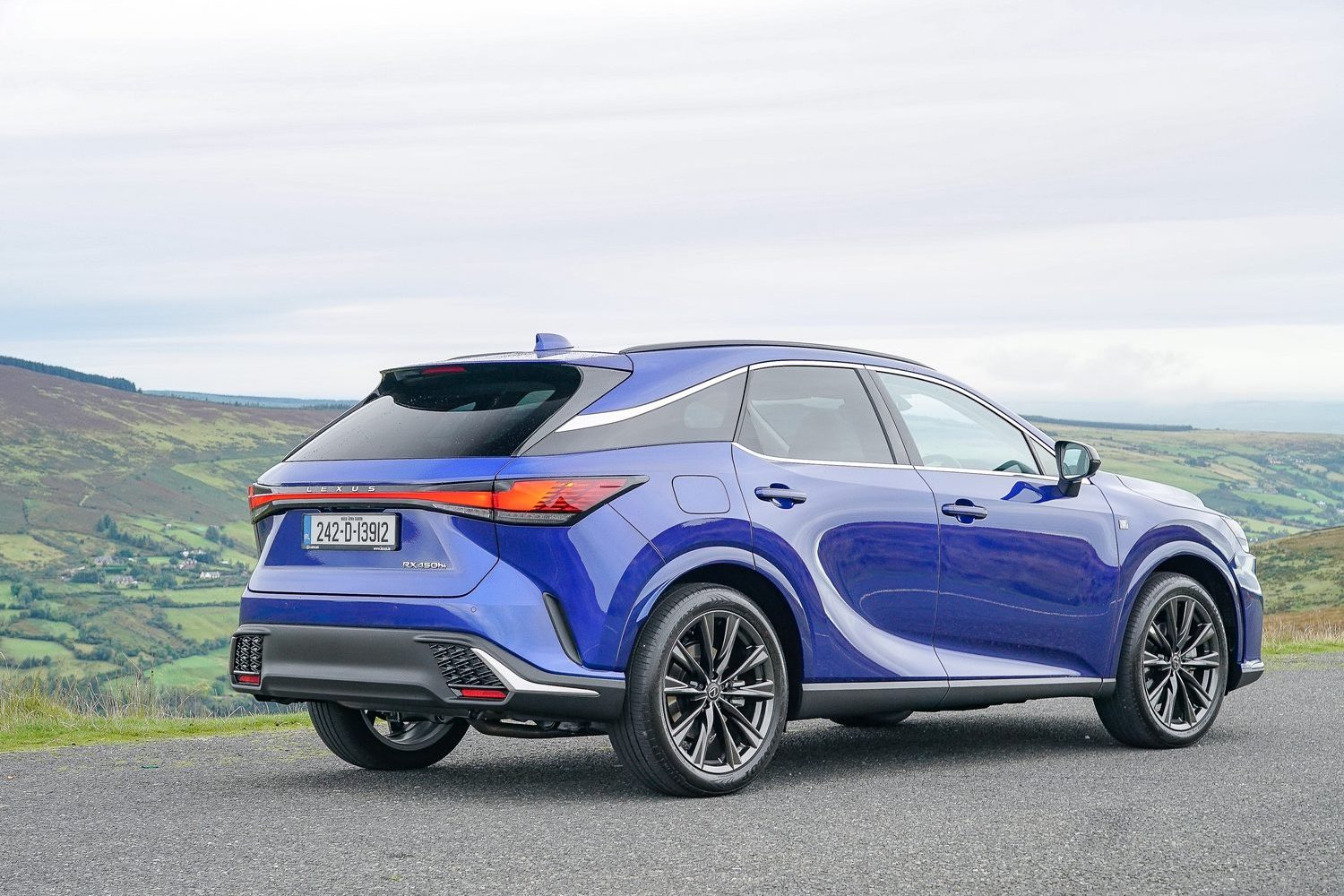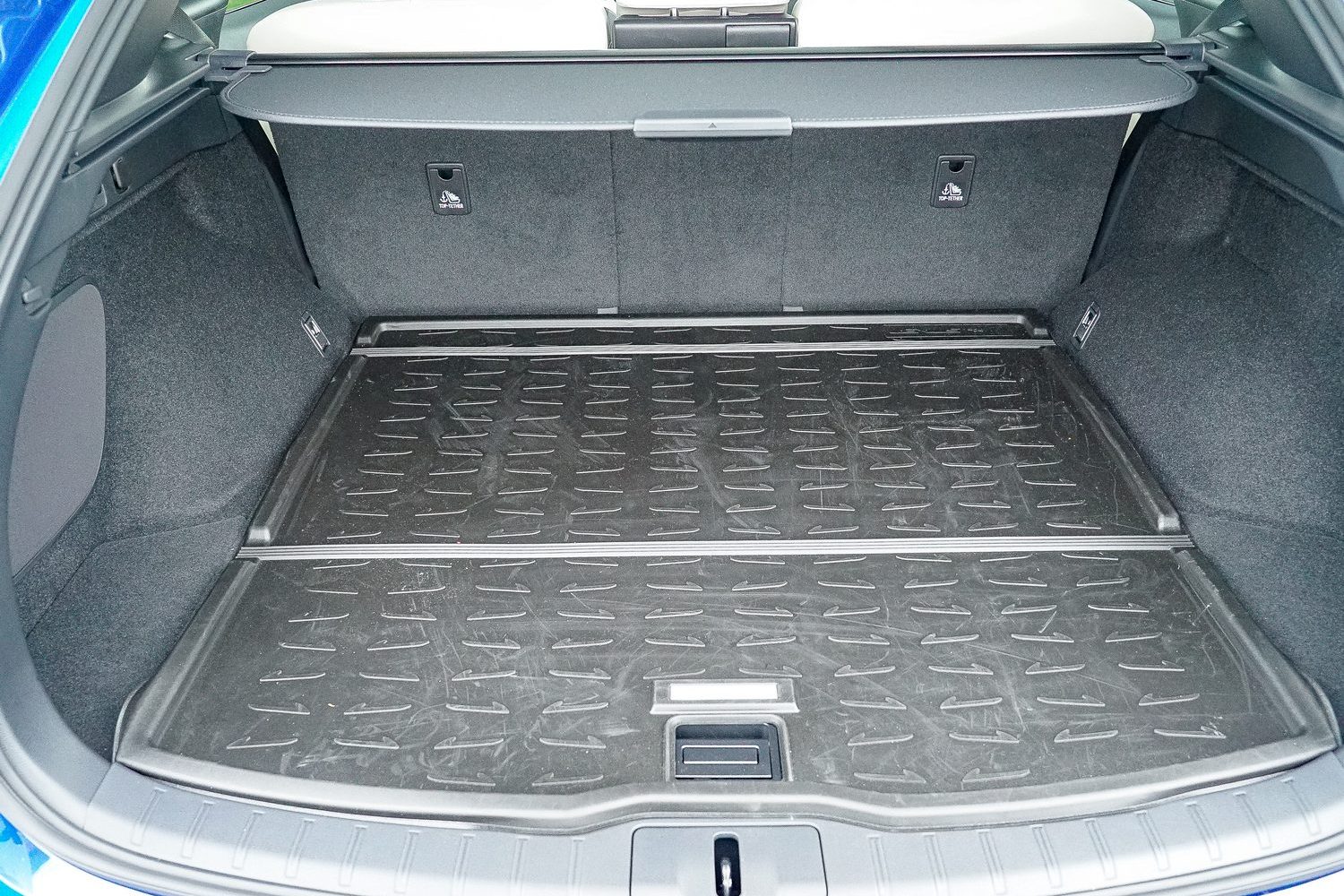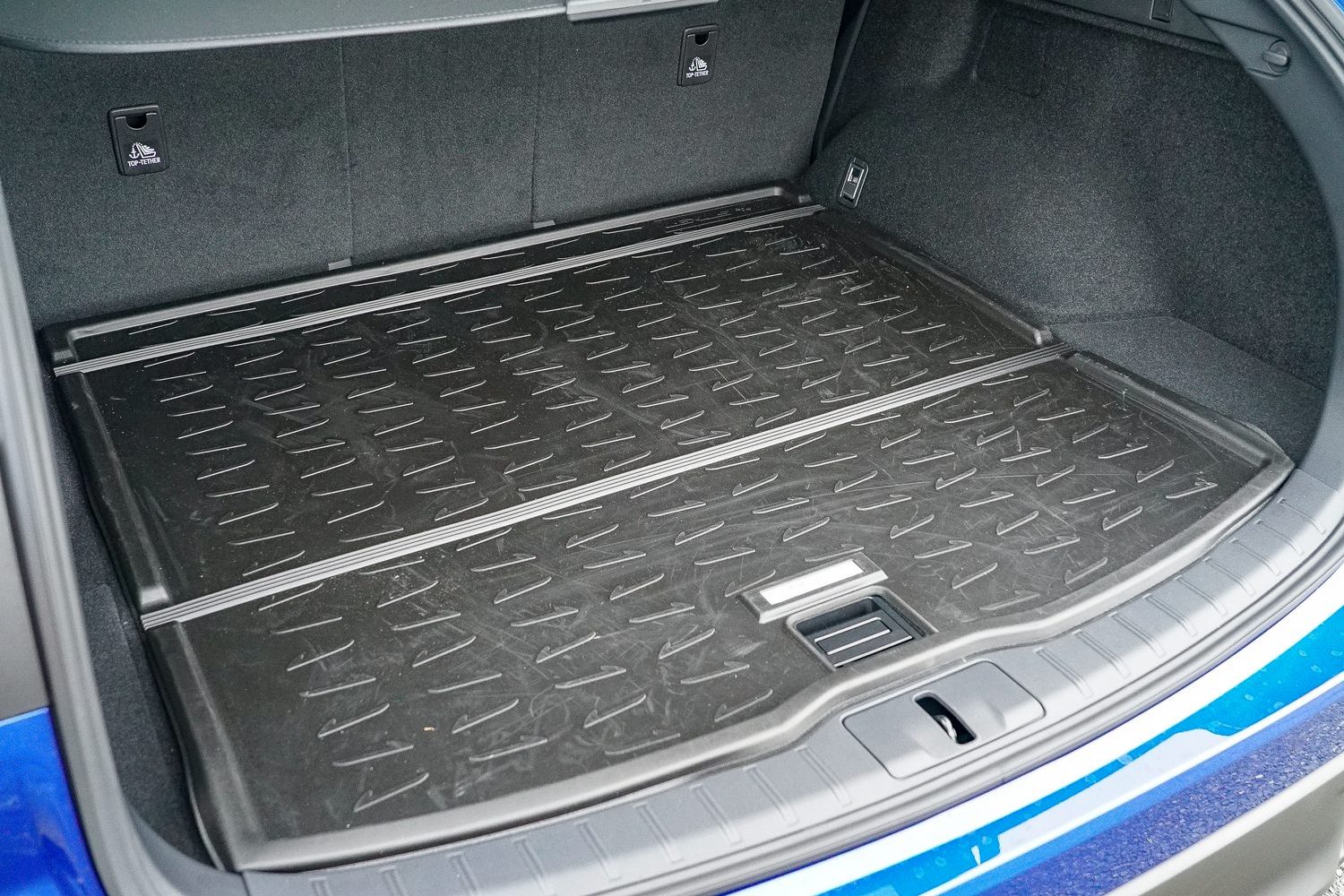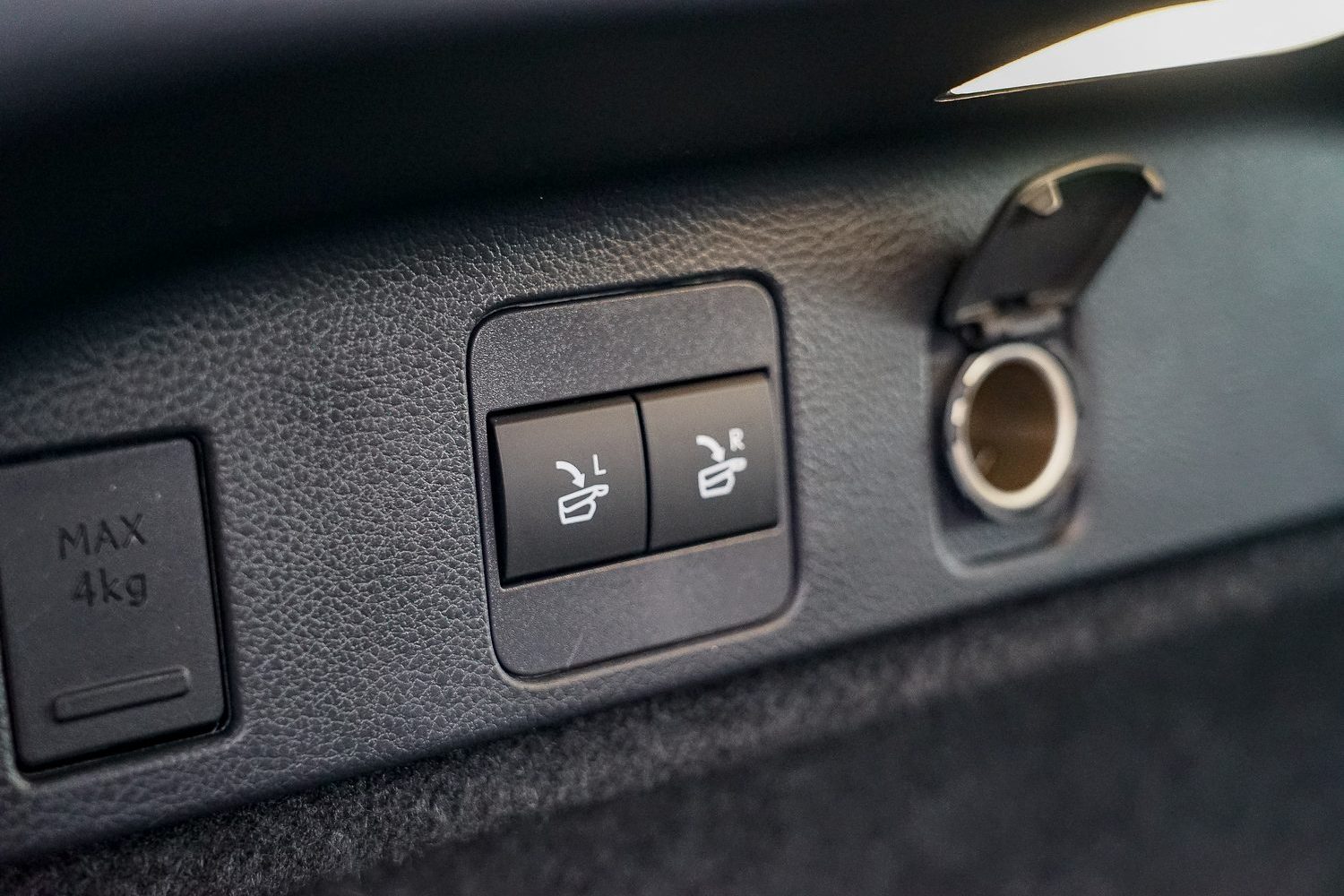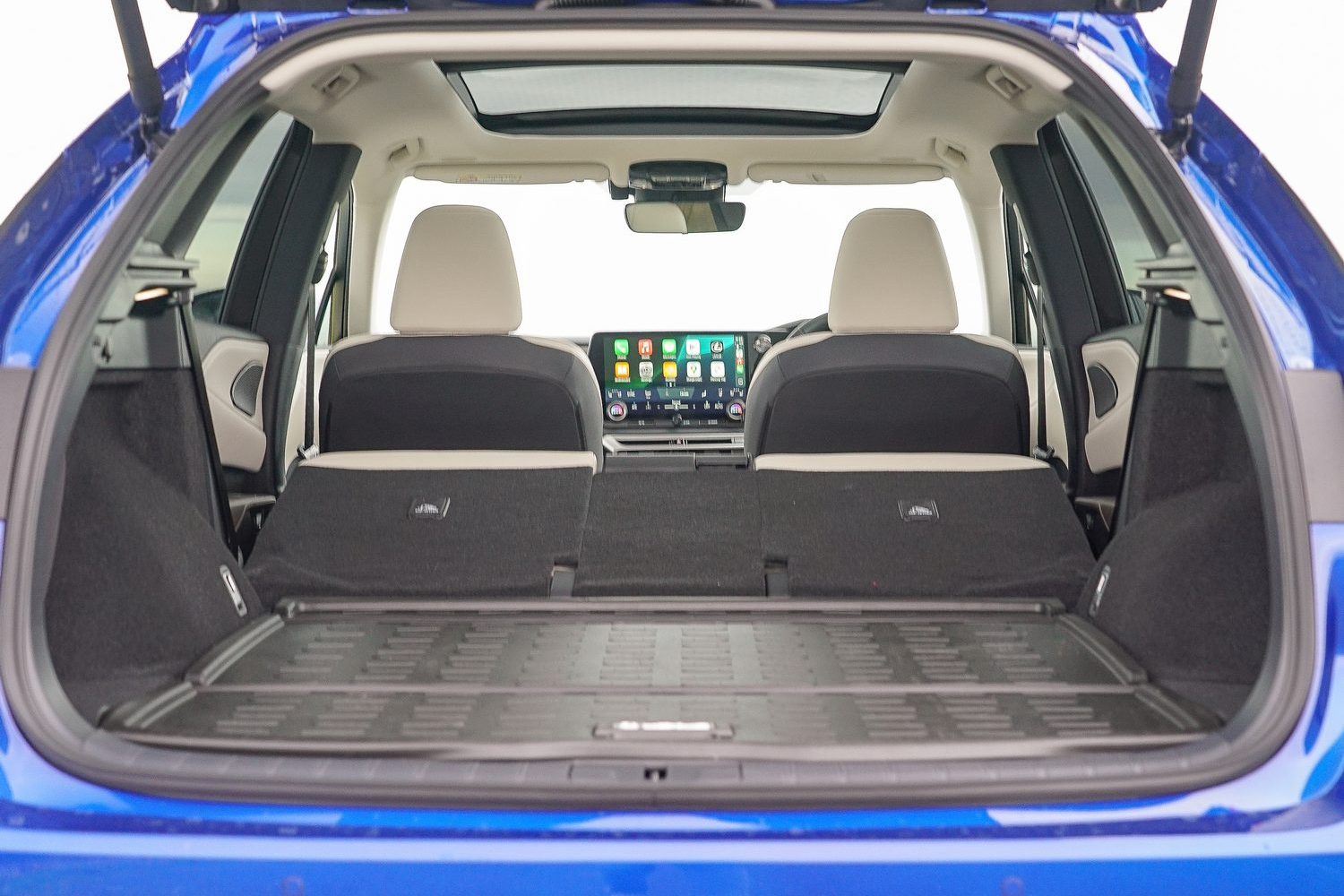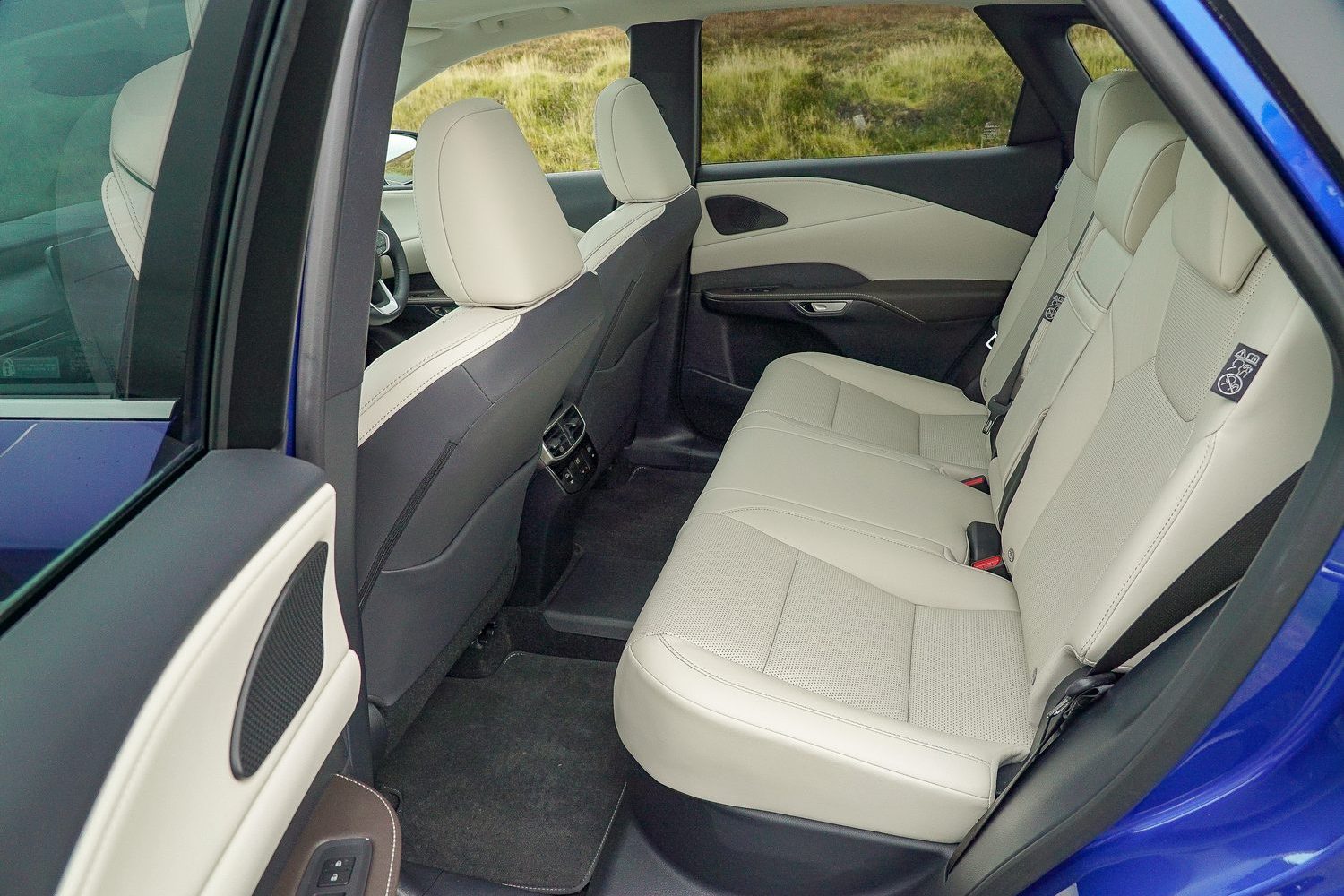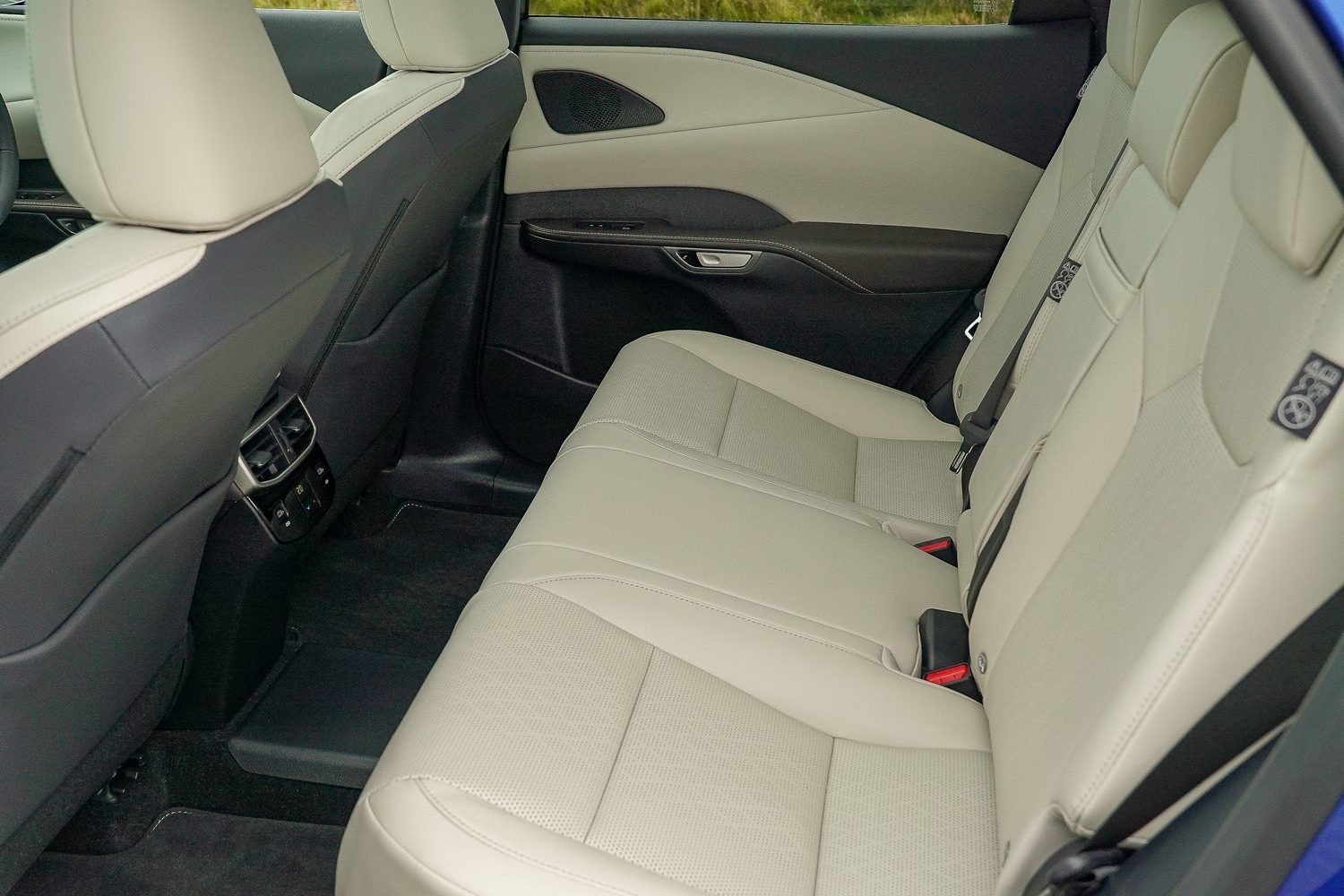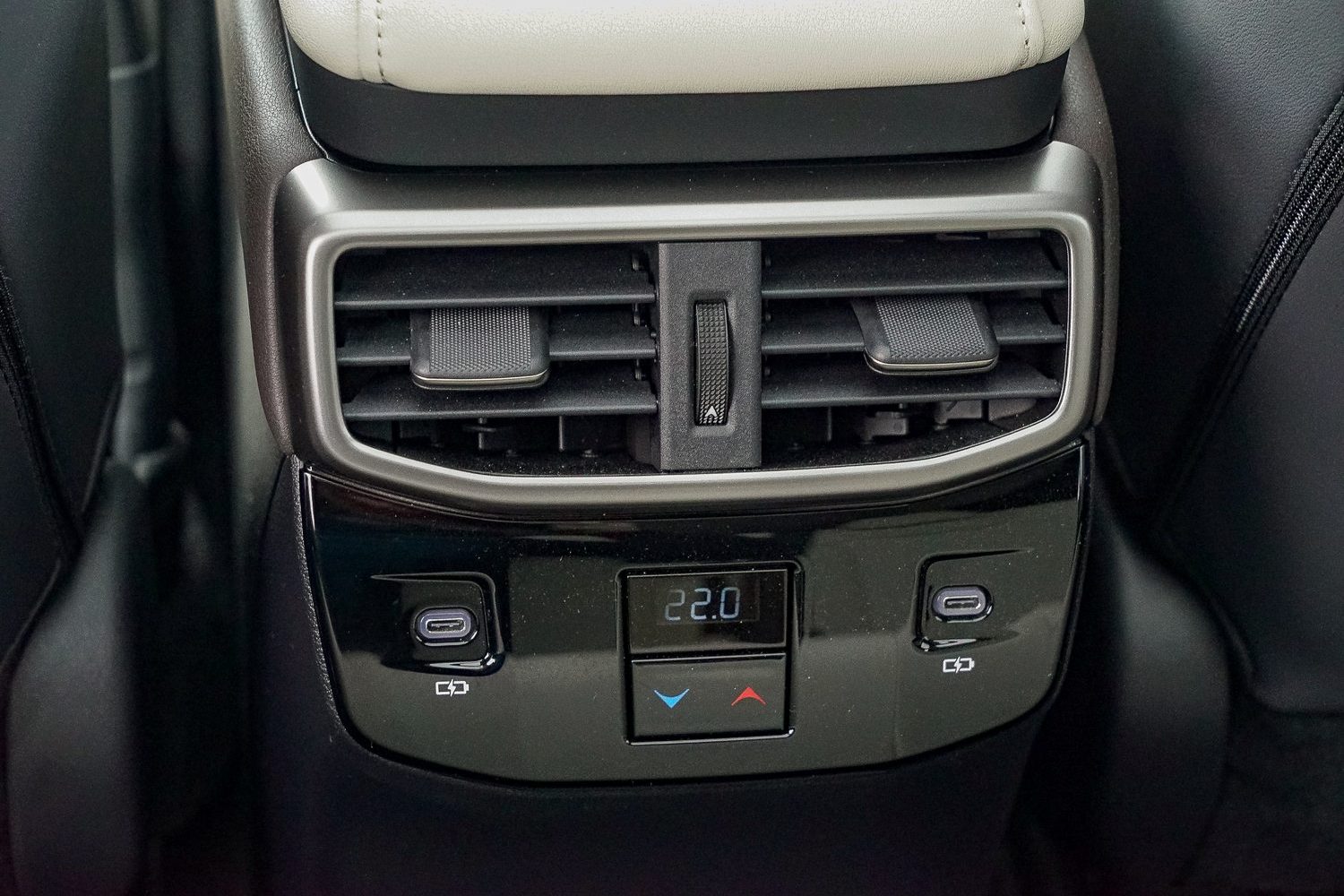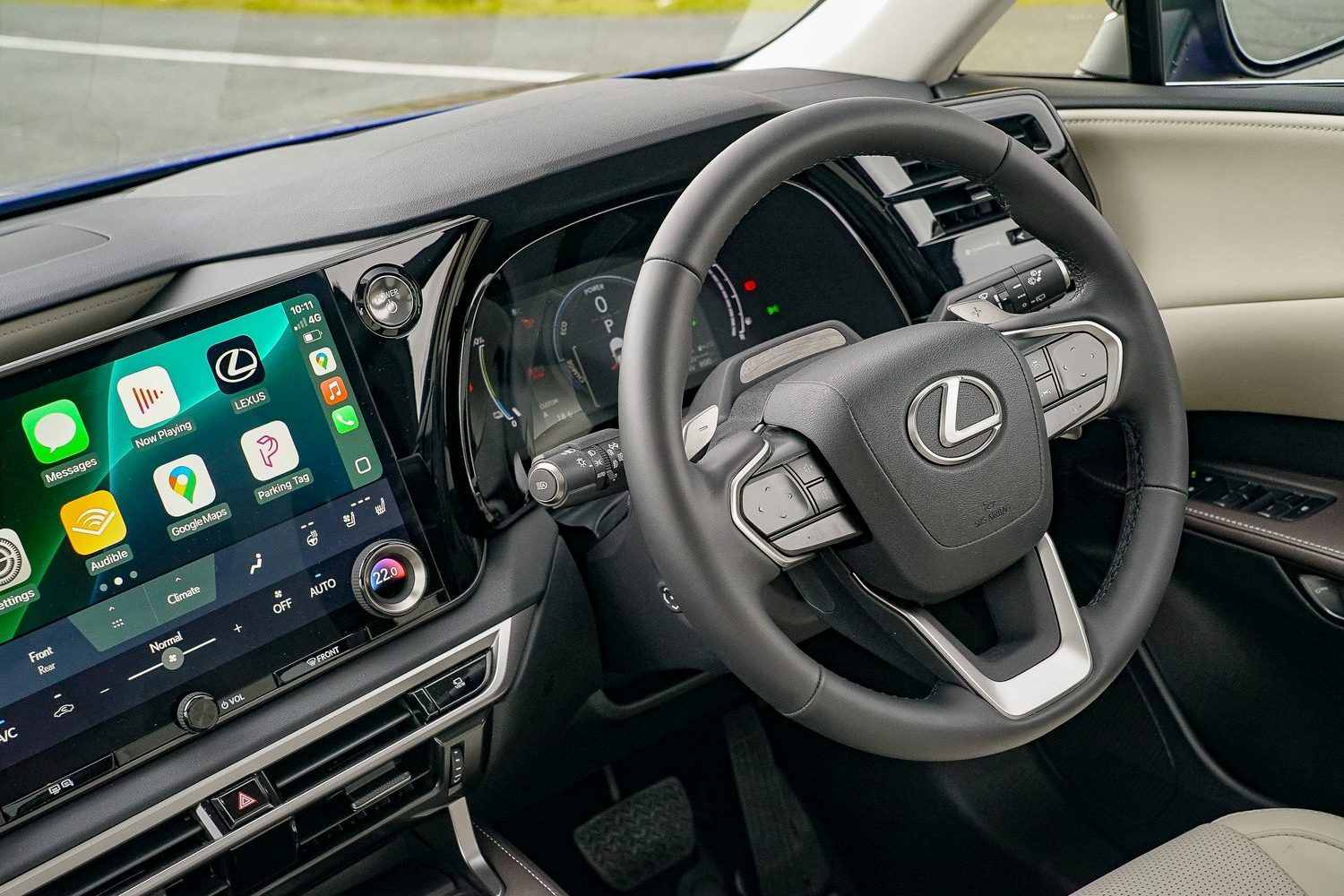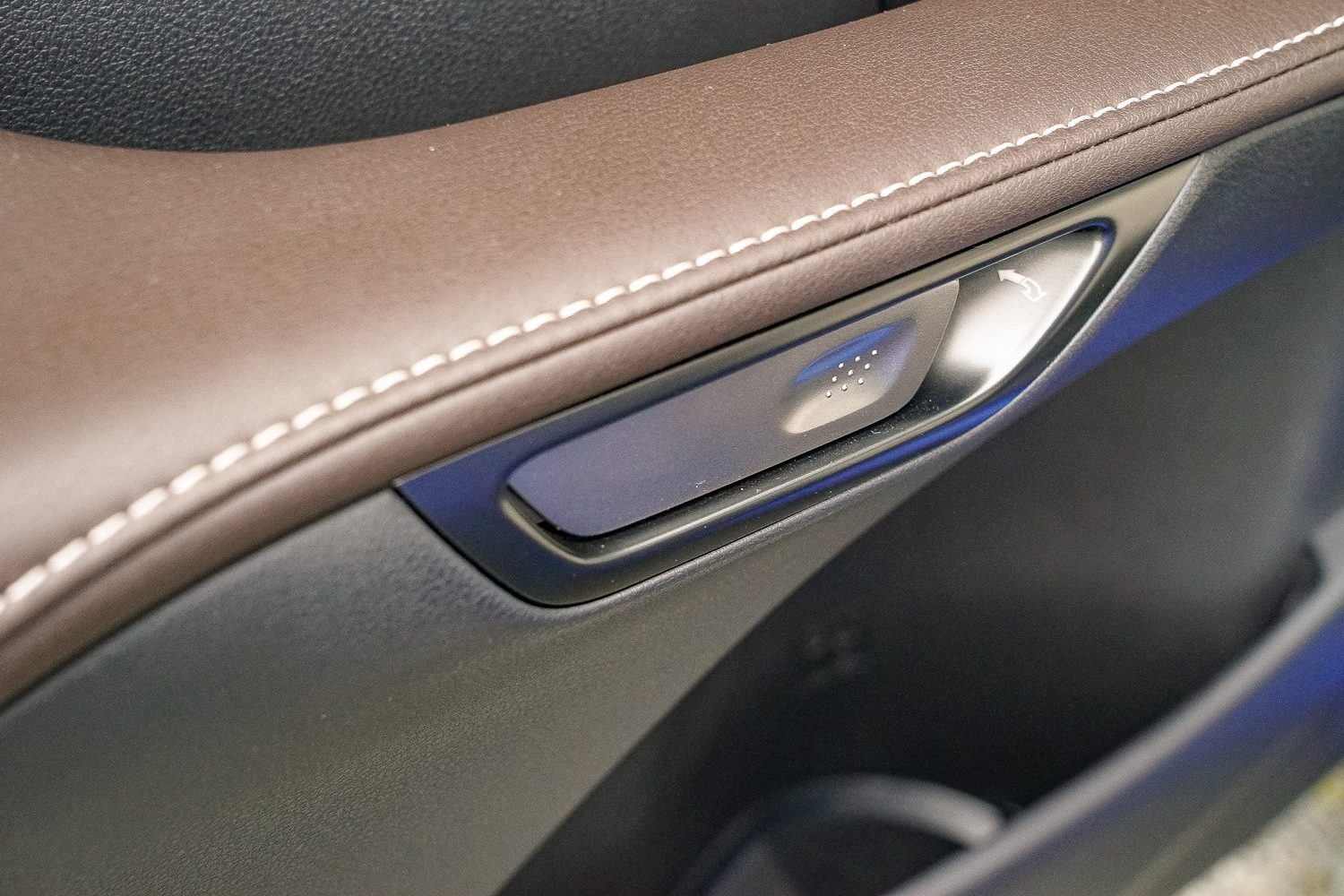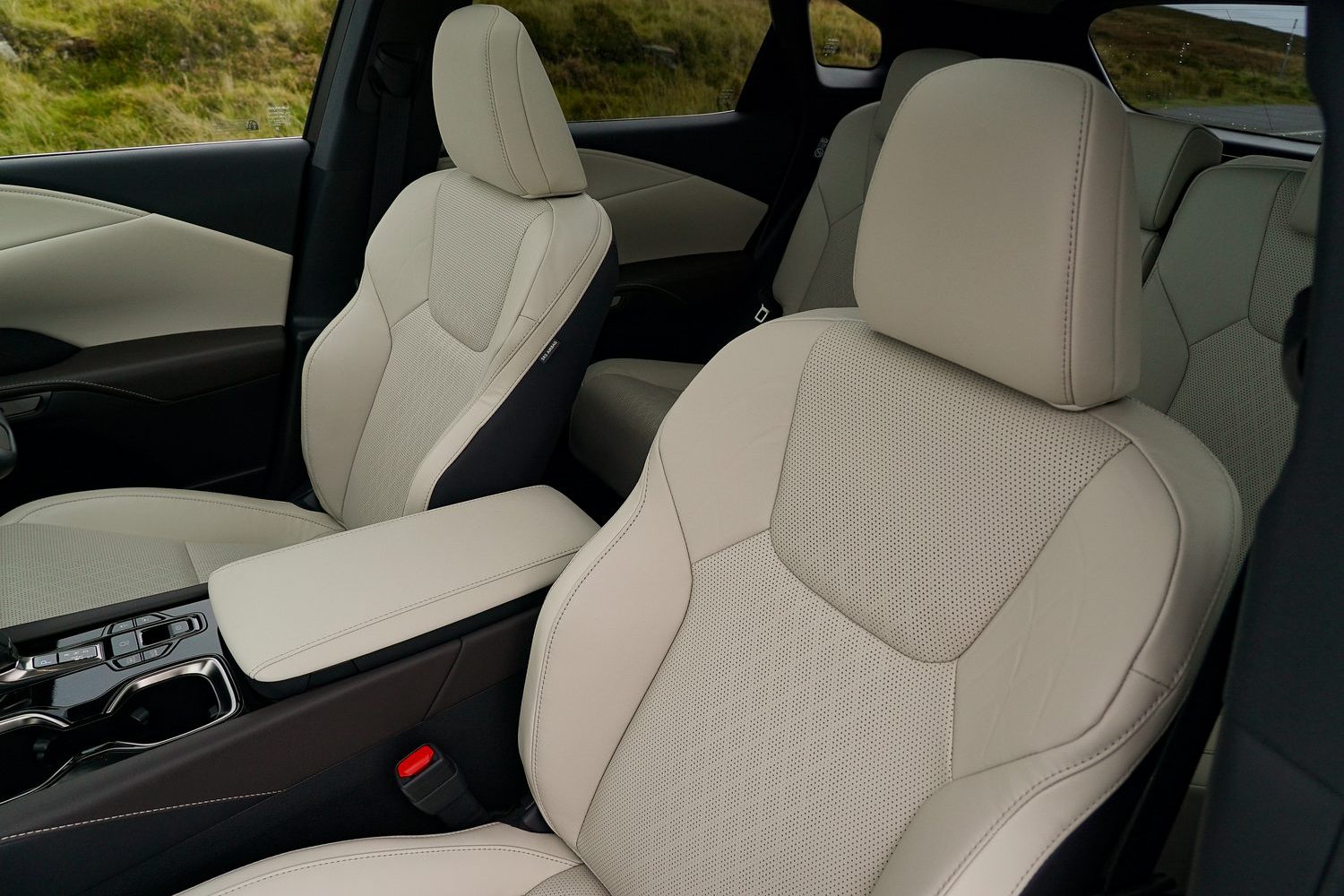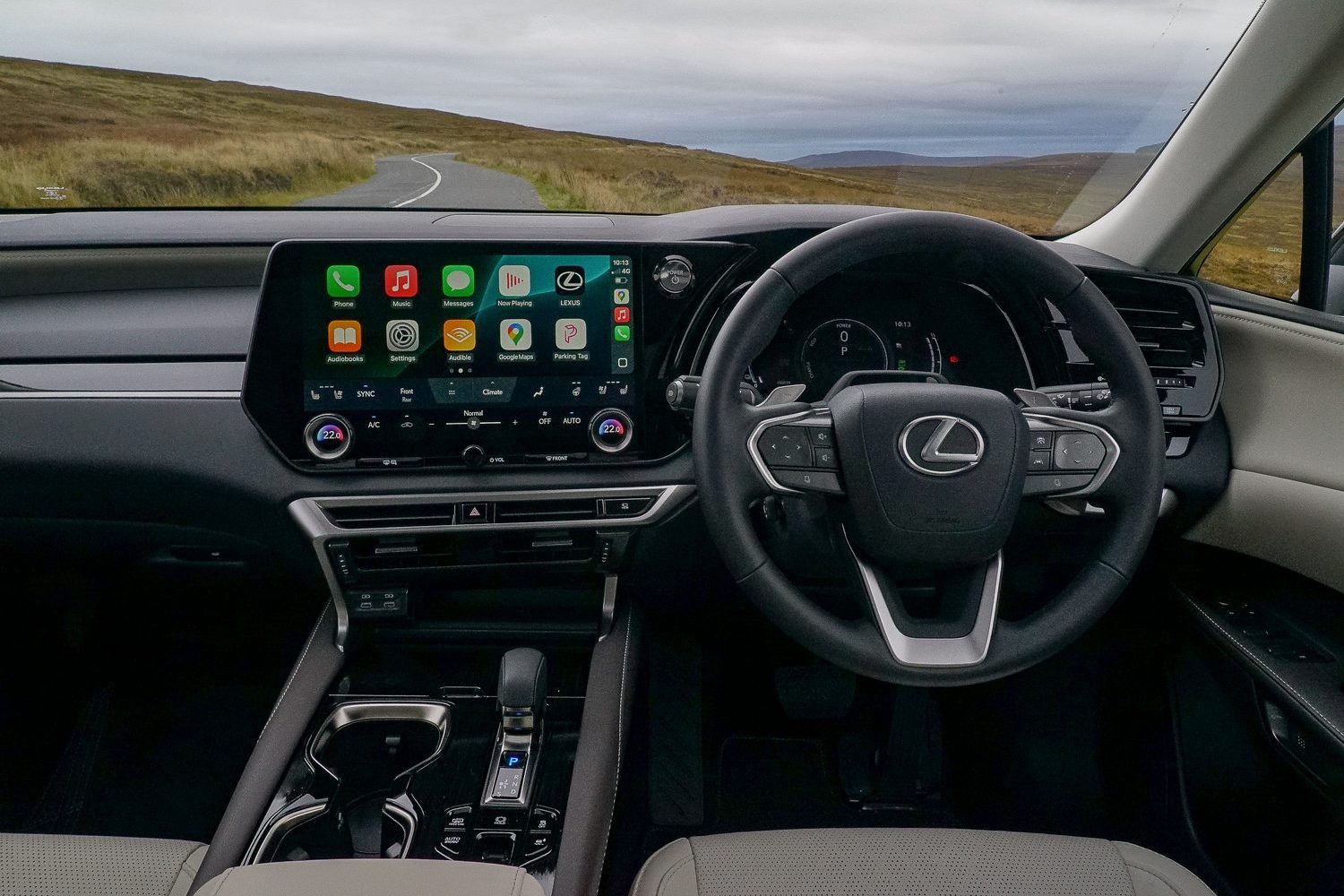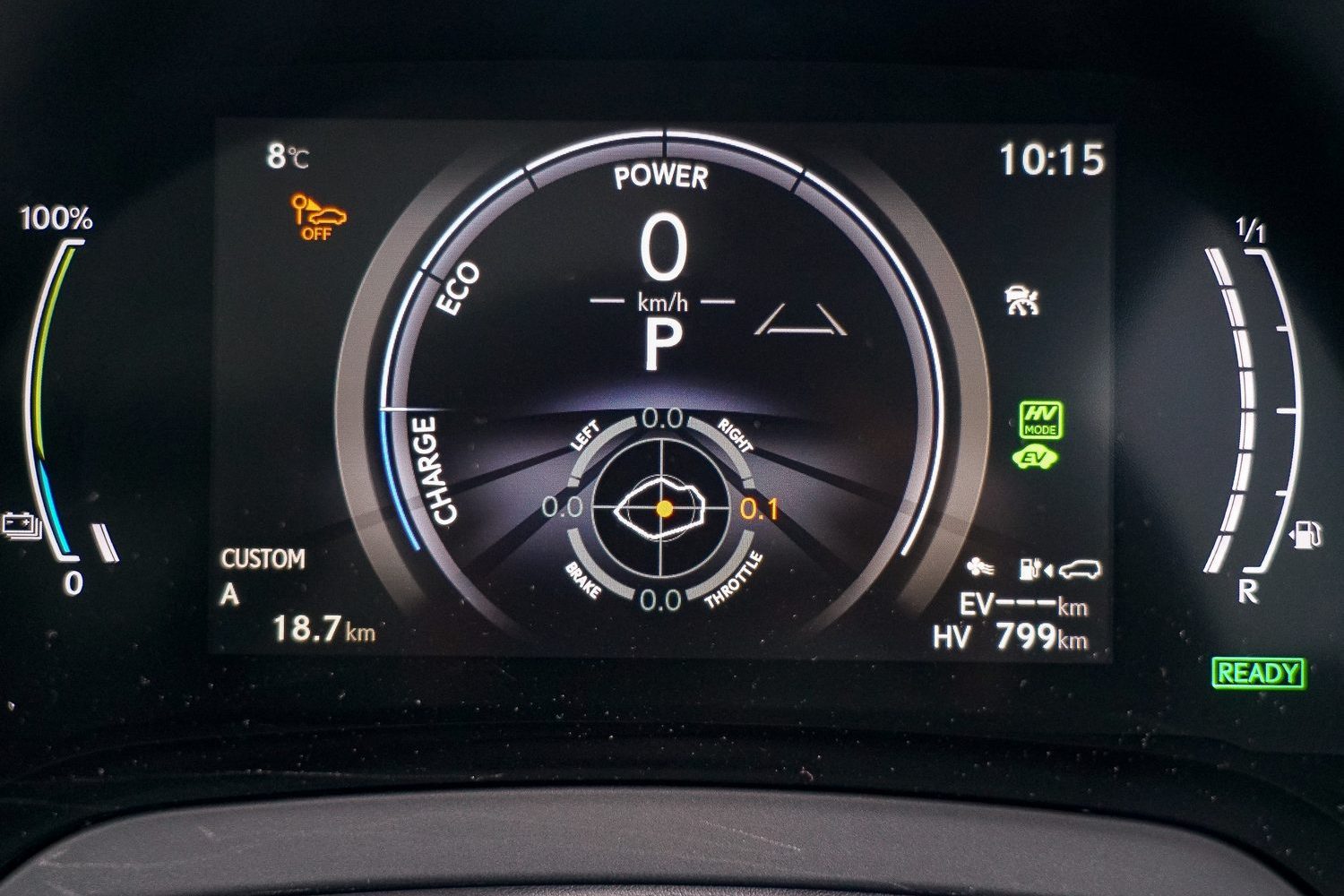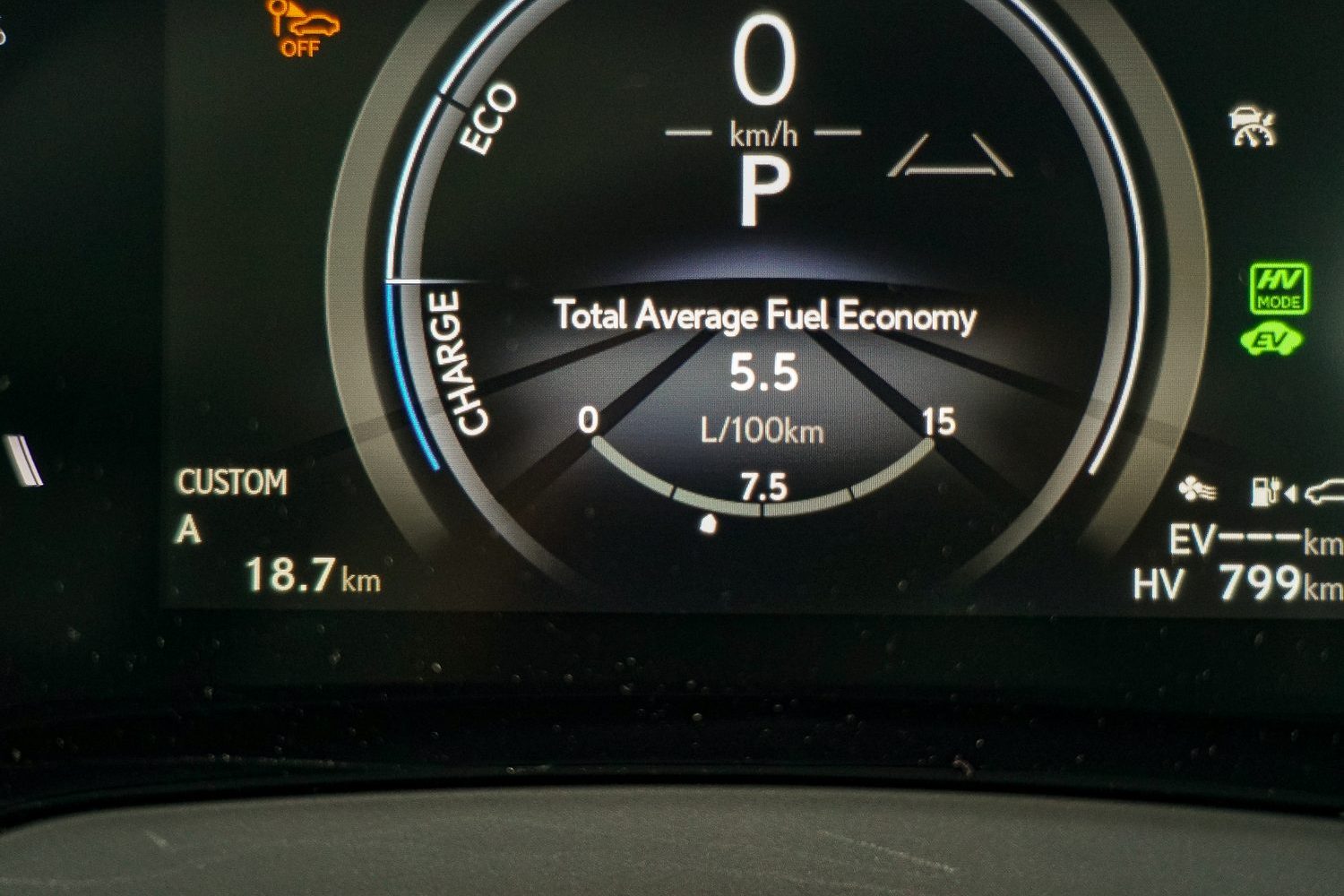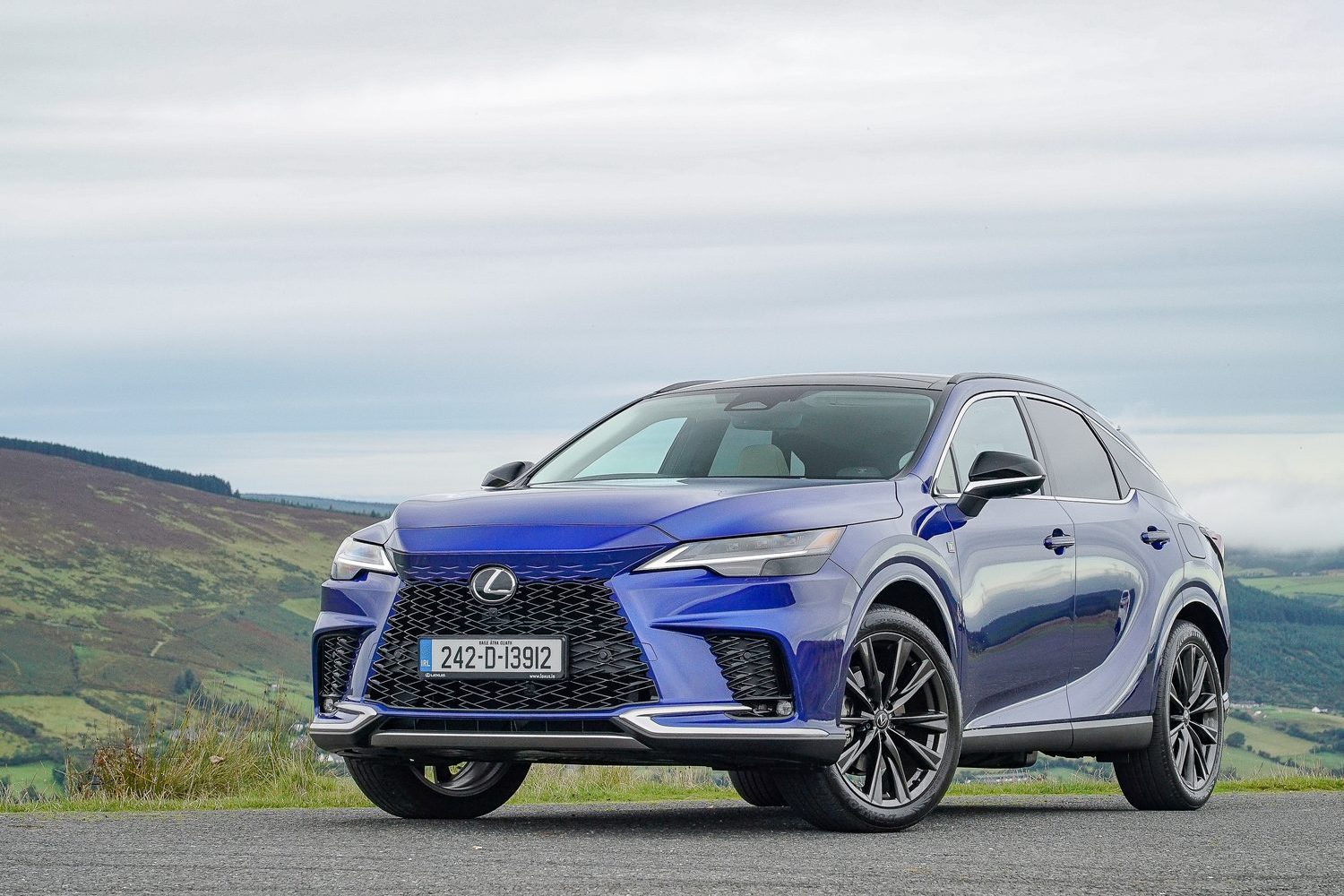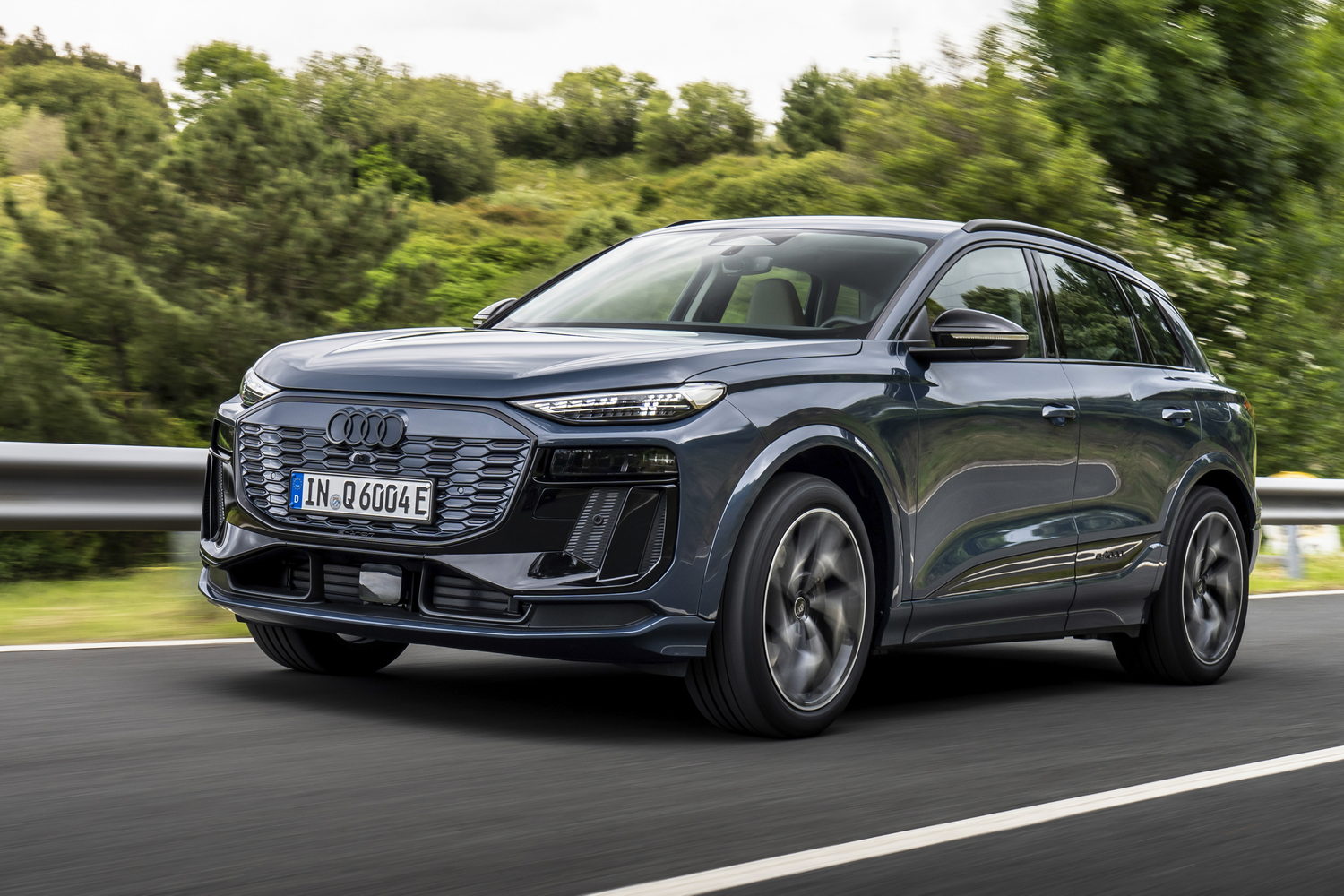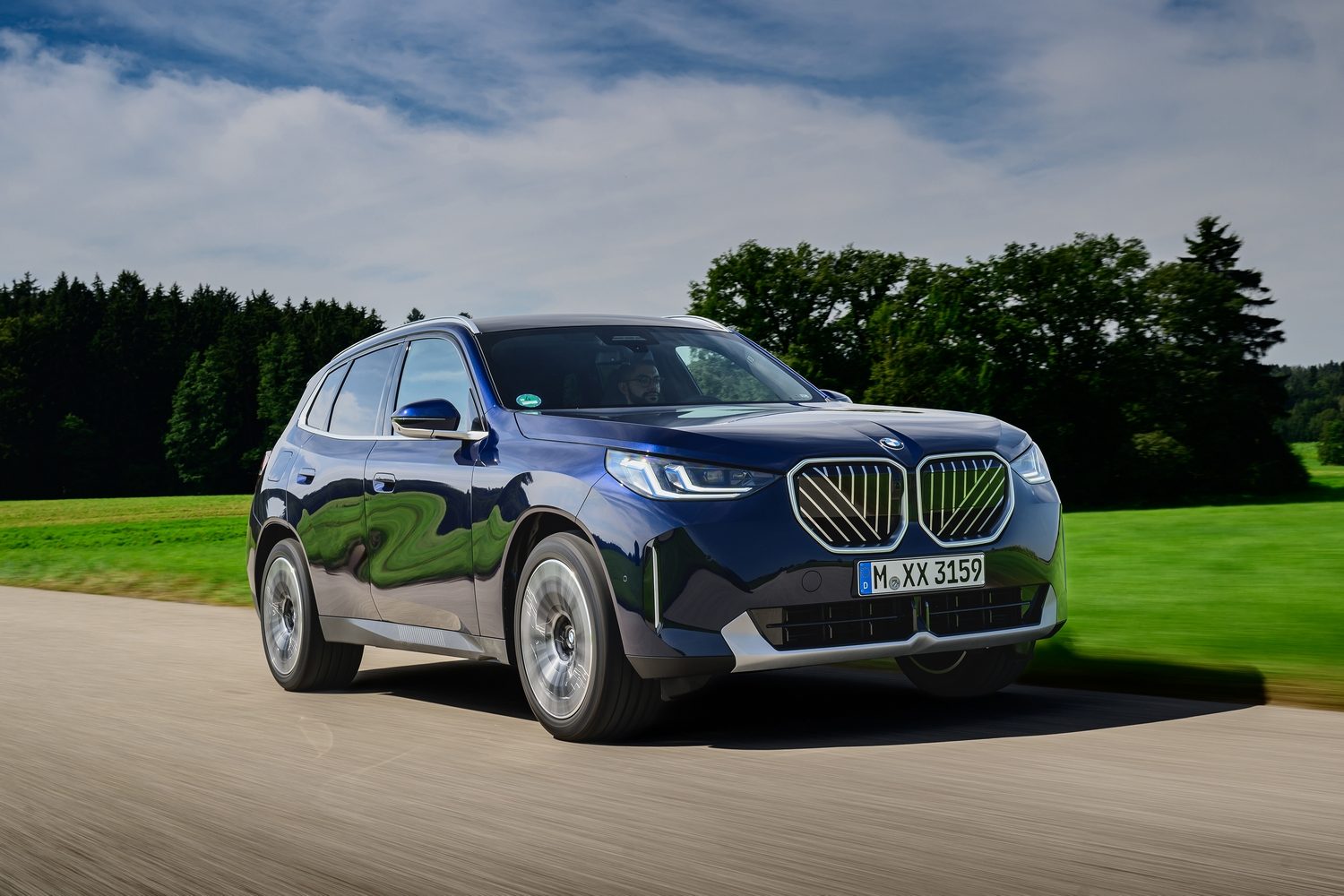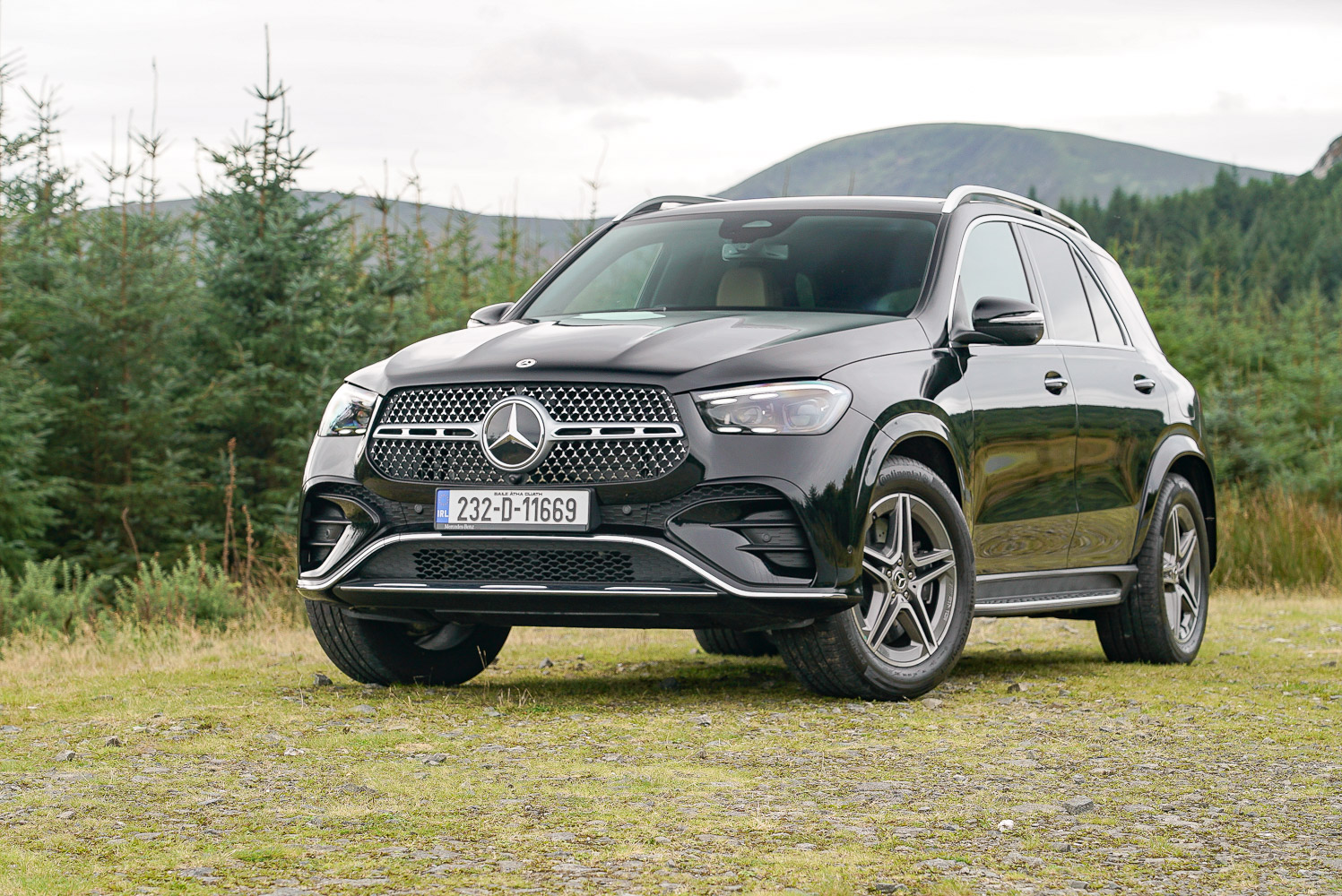The Lexus RX is the premium Japanese car maker’s flagship SUV, now in its fifth generation. When launched in Ireland last year, this iteration of the five-seat RX arrived with plug-in hybrid power to the fore. That shows a willingness to move with the times, but Lexus still does things a little differently to its - mostly German - rivals in that the focus is on the ownership experience and the quality of the cars over and above handling prowess.
Nonetheless, new car buyers today seem to want a sporty looking vehicle, even if they have no intention of driving quickly or exploring the limits of grip. Hence the popularity of BMW’s M Sport trim, and the same for S line from Audi and AMG Line from Mercedes. The equivalent from Lexus is called F Sport (named for the Fuji Speedway circuit in Japan) and this sportier looking trim level is now available for Irish buyers tempted by the charms of the RX 450h+.
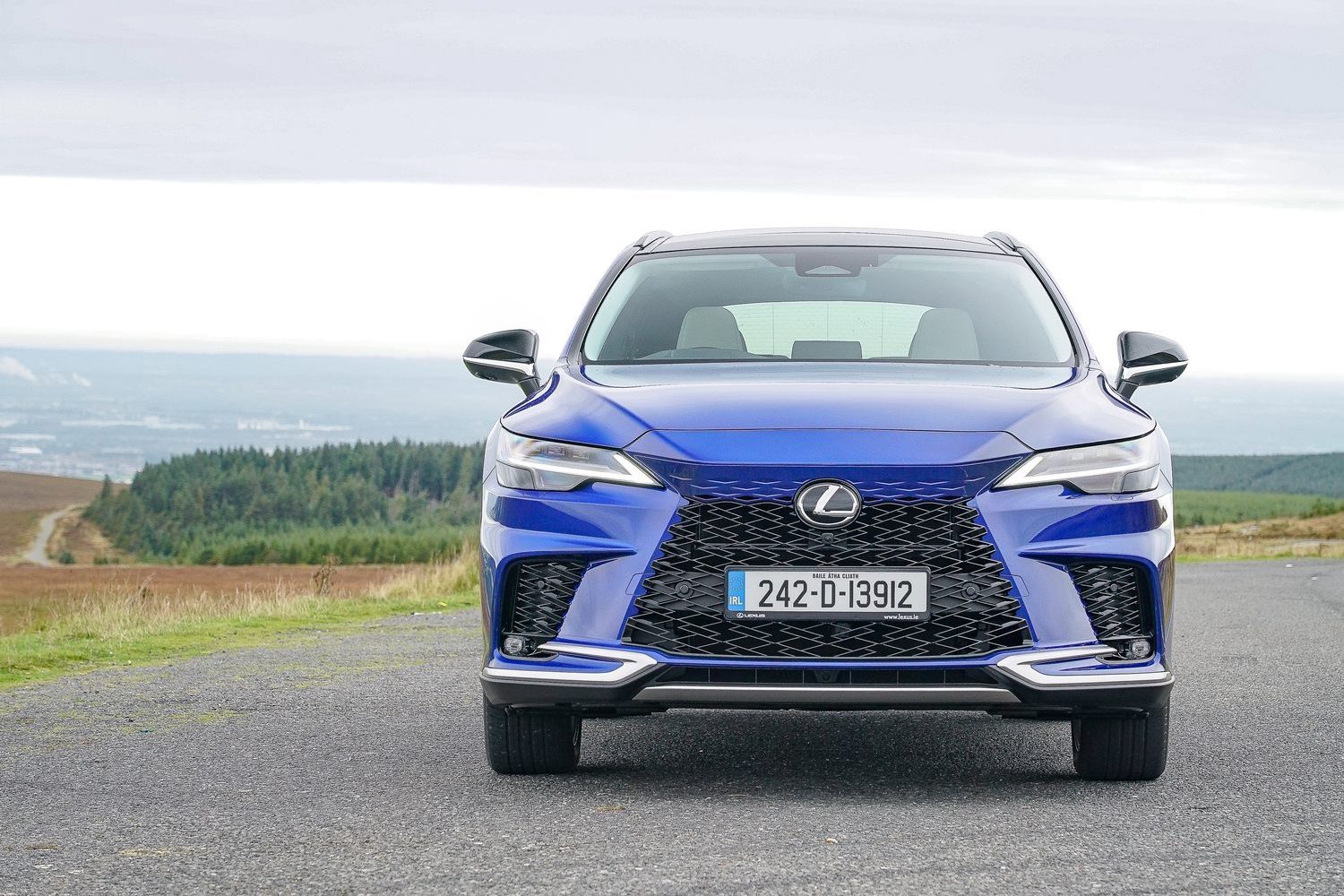
What’s new about the exterior of the RX F Sport Design?
As is the Lexus way, the F Sport Design trim is restrained, though it’s hard to miss in the extrovert ‘Heat Blue’ paintwork applied to our test car. It’s one of two colours unique to the F Sport Design, the other called ‘F White’. The dark-finished 21-inch alloy wheels are the next clue, wearing high-performance tyres, though they’re the same 235/50 R21 specification as on other models.
The new wheels are complemented by an intricate new radiator grille style up front, flanked by more pronounced ‘air curtain’ inlets and a sportier lip to the front apron. Moving back along the car you’ll spy “F” badges behind the front wheels and black door mirrors, and a sportier rear bumper that gives the RX more presence.
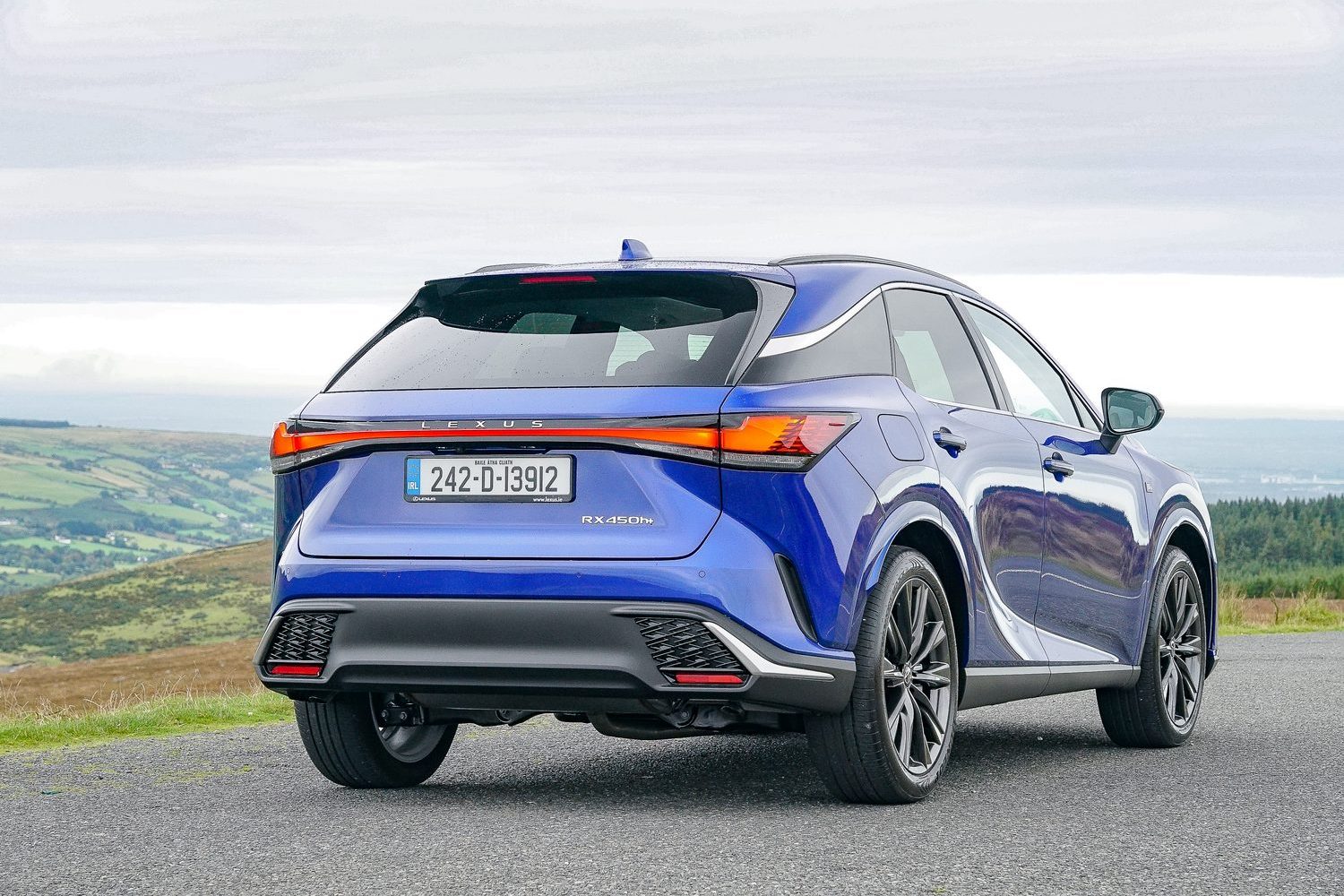
How much does the Lexus RX F Sport Design cost in Ireland?
The new F Sport Design trim is €95,570, sitting between the entry-level RX Luxury (from €92,240) and the top-spec Premium model costing €100,860. They all share the same plug-in hybrid powertrain.
All cars start with a specification including an electric tailgate, wireless phone charger, electrically adjusted front seats and steering wheel, three-zone climate control, keyless entry and start, heated and ventilated front seats, ambient lighting, heated leather steering wheel, Apple CarPlay and Android Auto, navigation, leather upholstery, automatic lights and wipers, panoramic glass roof, 21-inch alloy wheels, roof rails, parking camera system and sensors, and lots more.
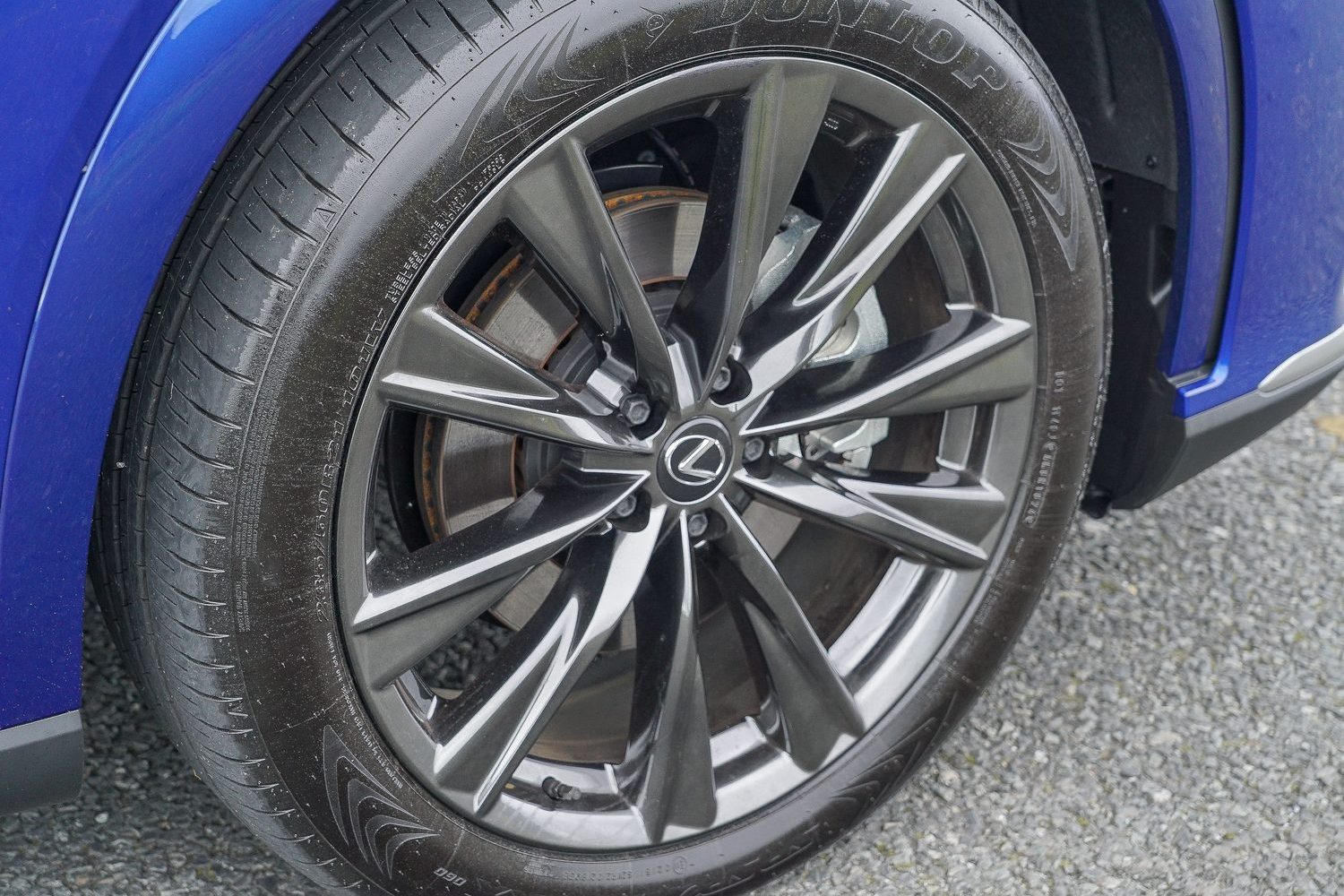
The F Sport Design is differentiated by its unique exterior for the most part, with a couple of extras inside.
In terms of warranty, there’s standard three-year/100,000km manufacture cover, three-year (unlimited mileage) surface rust and paintwork cover and a 12-year (again unlimited mileage) warranty against corrosion perforation. Separately, all hybrid components - including the battery - come with a five-year/100,000km warranty, though if you service your RX with a Lexus dealer that warranty is topped up each year to a potential of 15 years and unlimited mileage.
How big is the Lexus RX?
Regardless of which version you go for, the side profile of the RX tricks the eye into thinking the rear is more sloped than it is, though against some of the larger rival SUVs, the RX’s back window is more raked. Some brands would likely market it as a coupe-SUV, but not Lexus. Its balanced proportions also disguise the size of the car.
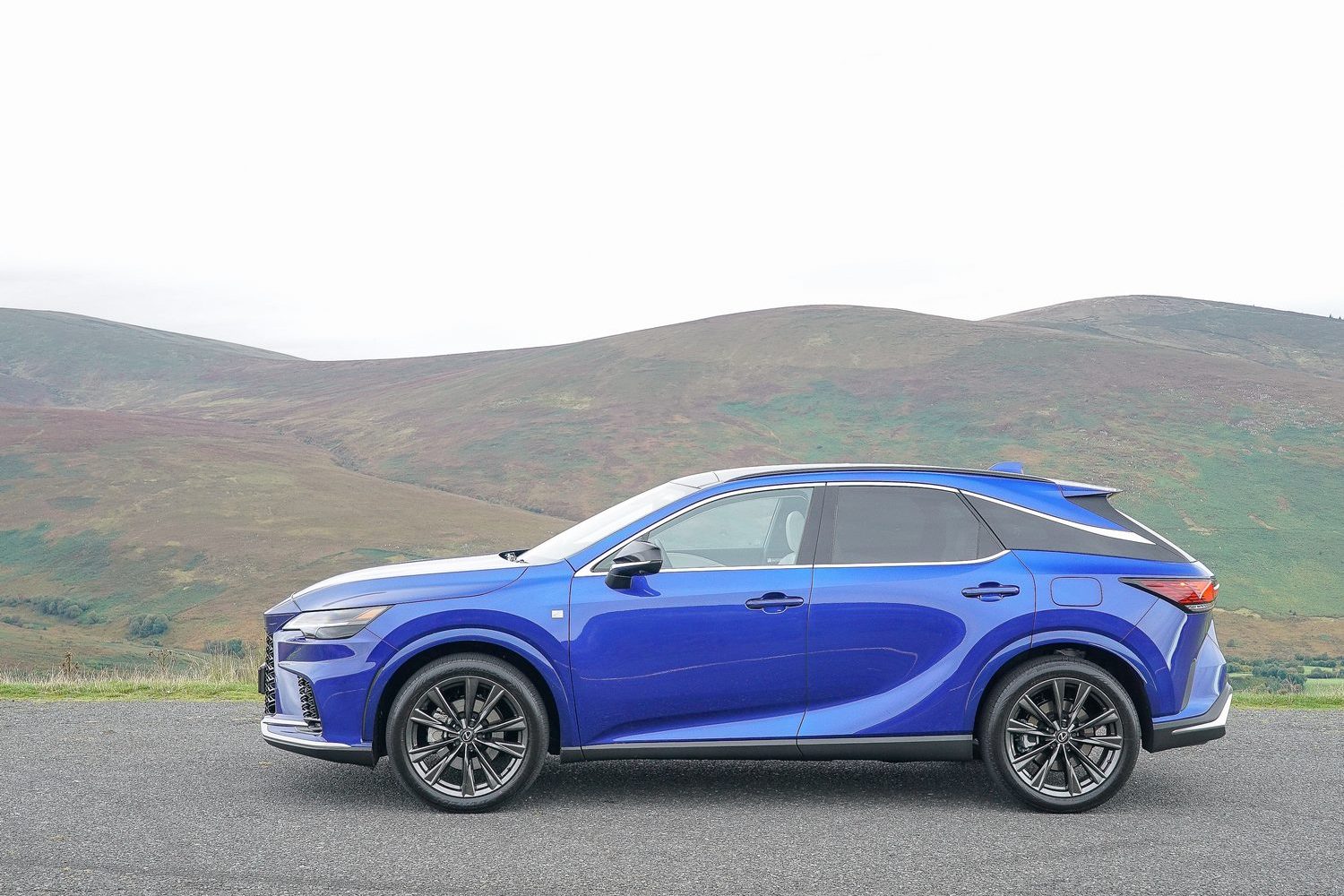
For reference, the RX is 4,890mm long (on a 2,850mm wheelbase), 1,920mm wide and 1,695mm tall. The BMW X5 towers over it at 1,745mm high, while it’s wider and longer too at 2,004mm and 4,922mm, respectively. The same can be said for the Audi Q7 and Mercedes GLE, though the Lexus is undoubtedly larger than those brands’ next SUV down, so it seems to sit in the middle somewhere on its own.
In its packaging, Lexus clearly prioritised passenger space over boot volume, as the latter, at 461 litres, is adequate rather than outstanding. Saying that, the electric tailgate reveals a wide opening making loading in big items a breeze. There are solid metal eyes dotted around the boot to aid strapping things down, extra hooks in the side for holding lighter items and a useful 12-volt power outlet. The rear seat backs split 60:40 and fold at the press of a button on the boot wall, creating a reasonably flat expanse if you need to fit in long items.
A look inside the Lexus RX F Sport Design
Although the F Sport Design model gets a few additional items for its cabin, it’s essentially unchanged from that of the RX Luxury. Some may rue the lack of an overtly sporting look, but Lexus does things its own way and there’s no faulting the execution of this five-seat SUV. The interior is glorious for the most part, exceptionally well made with tactile switchgear and has a feeling like it will never fade. Even the door-exit buttons are a joy to use.
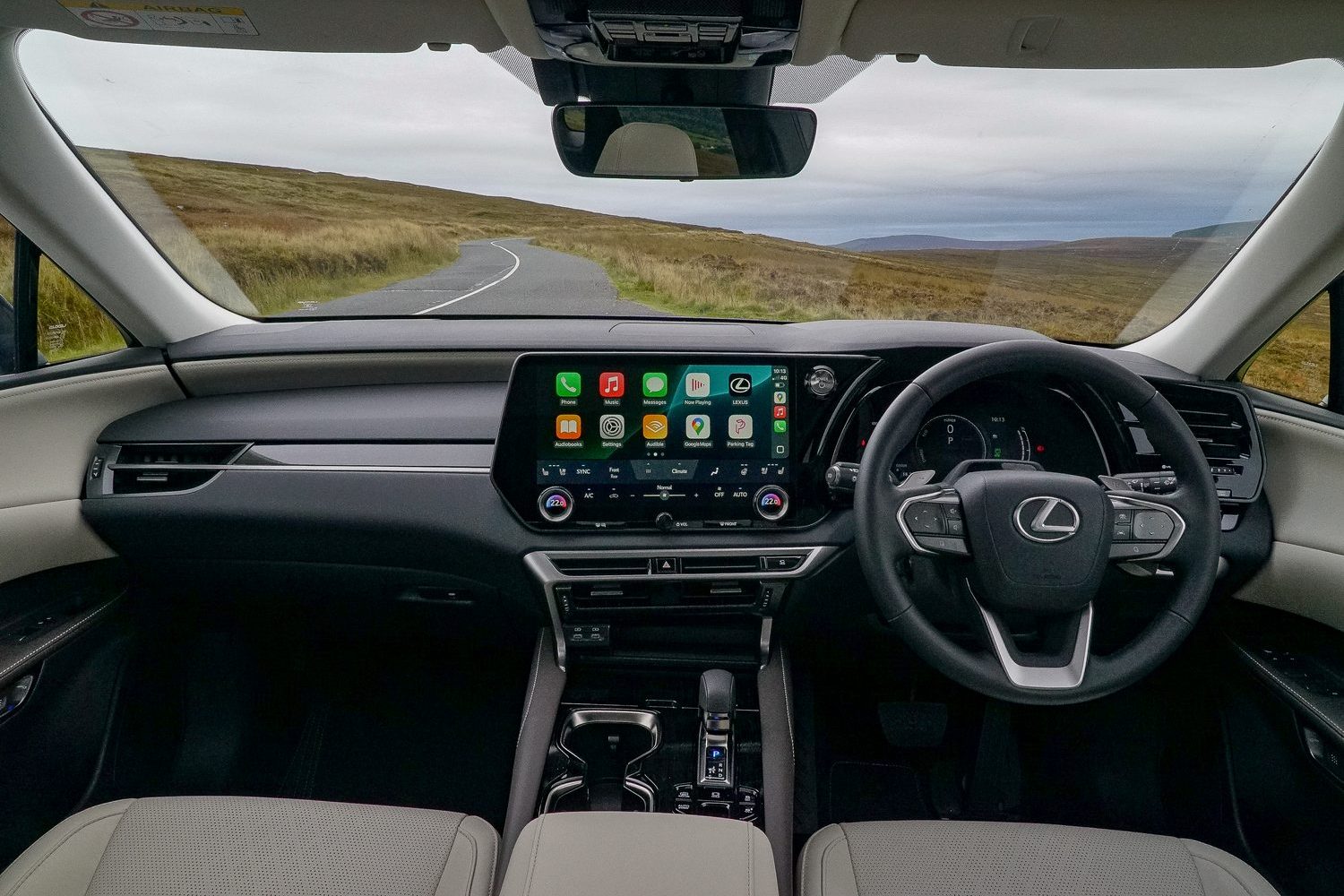
Our test car featured a tasteful combination of cream and dark brown, though your attention is understandably drawn by the massive touchscreen. Lexus has cleverly integrated physical controls for the heating and ventilation into this display, with a volume and power knob at its centre, too. The leather-wrapped steering wheel feels good to hold and the customisable controls on it (more on which below) work well. There’s lots of (electric) adjustment of the driving position too.
Rear-seat passengers are almost as well catered for with a wide, comfortable seat base and flat floor sections. There are digital temperature controls for the back and USB-C ports as well.
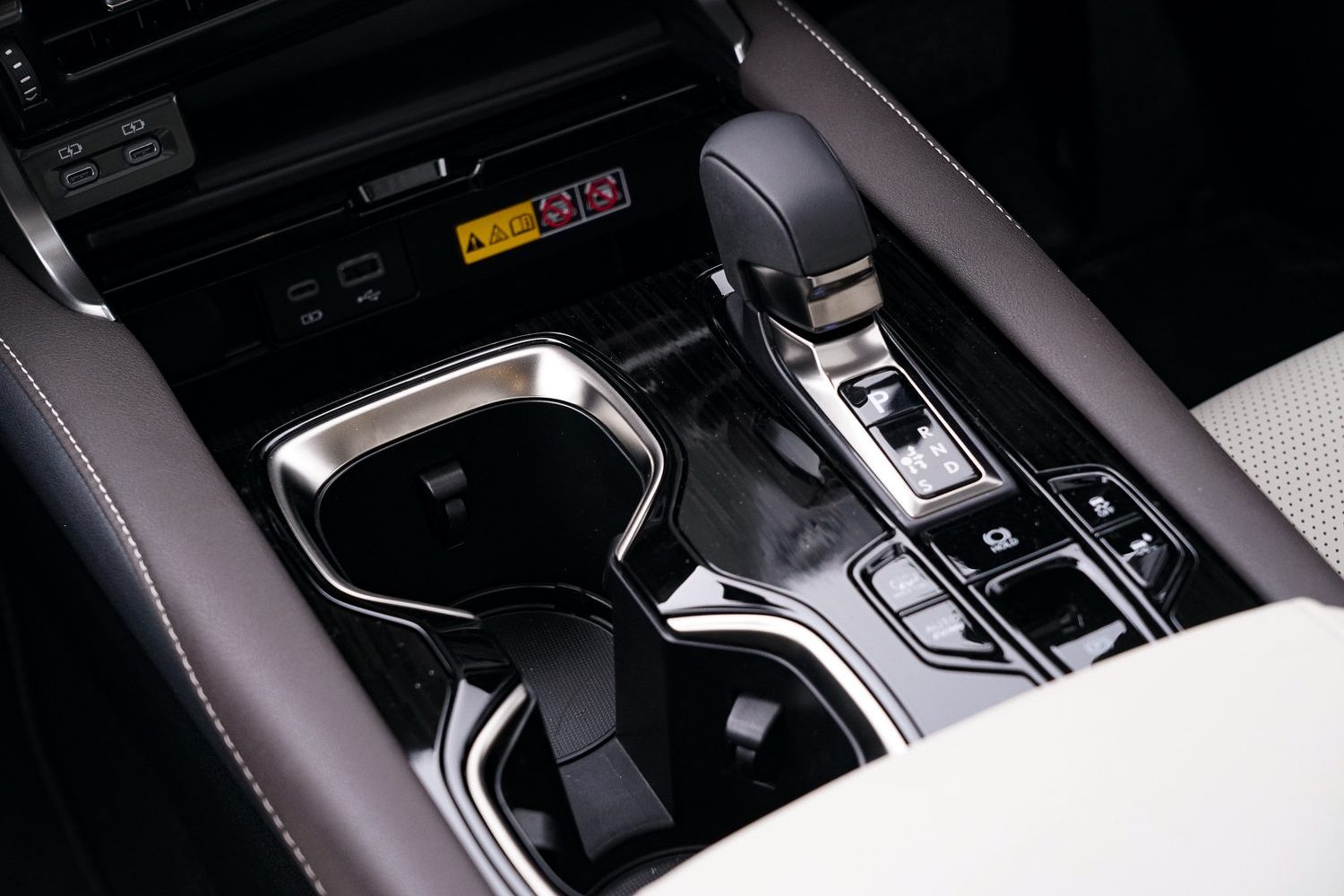
The Lexus RX F Sport Design’s on-board technology
A subtle set of digital instruments on a seven-inch screen in found in front of the driver. They’re not showy or glitzy, but they are clear and easy to read at a glance. The 14-inch touchscreen in the centre of the car is far more prominent and below you’ll find two USB-C sockets and a wireless charger.
The F Sport Design comes with a head-up display that uniquely interfaces with the touch-sensitive controls on the steering wheel. Lightly hold your thumb on the buttons (found on both spokes of the wheel) and it shows a menu in the head-up display, which you scroll through by sliding your thumb around and then actually select a function by pressing the button. It’s easy to use even while you’re driving.
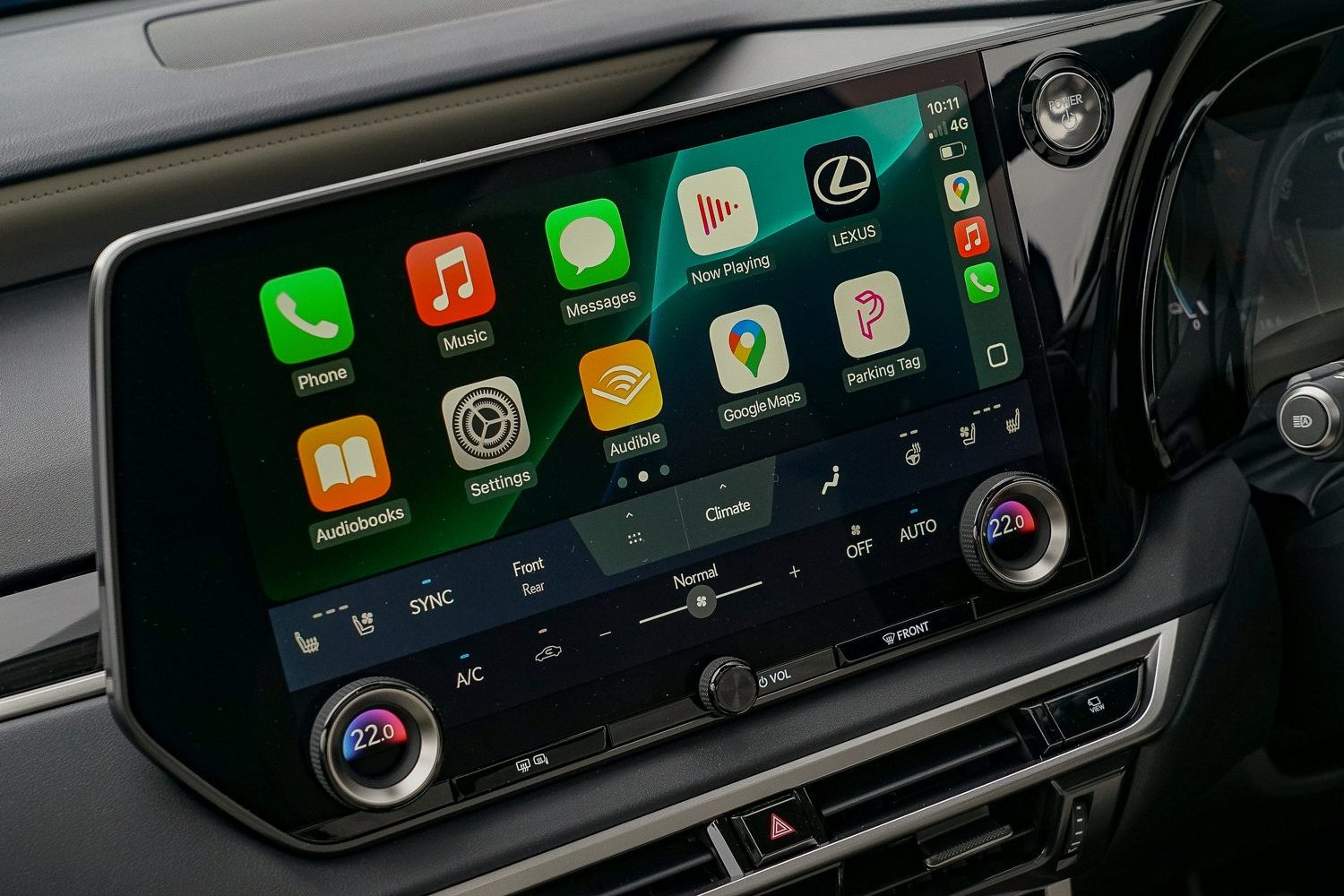
How many child seats can I fit in the Lexus RX?
There’s loads of space in the back for bulky baby seats, rear-facing or not, but as is the norm, there are only two pairs of ISOFIX mountings, plus ‘top tethers’. It’s unlikely any booster or other car seat secured by seatbelts would fit in between, though the middle seat squab is wider than many.
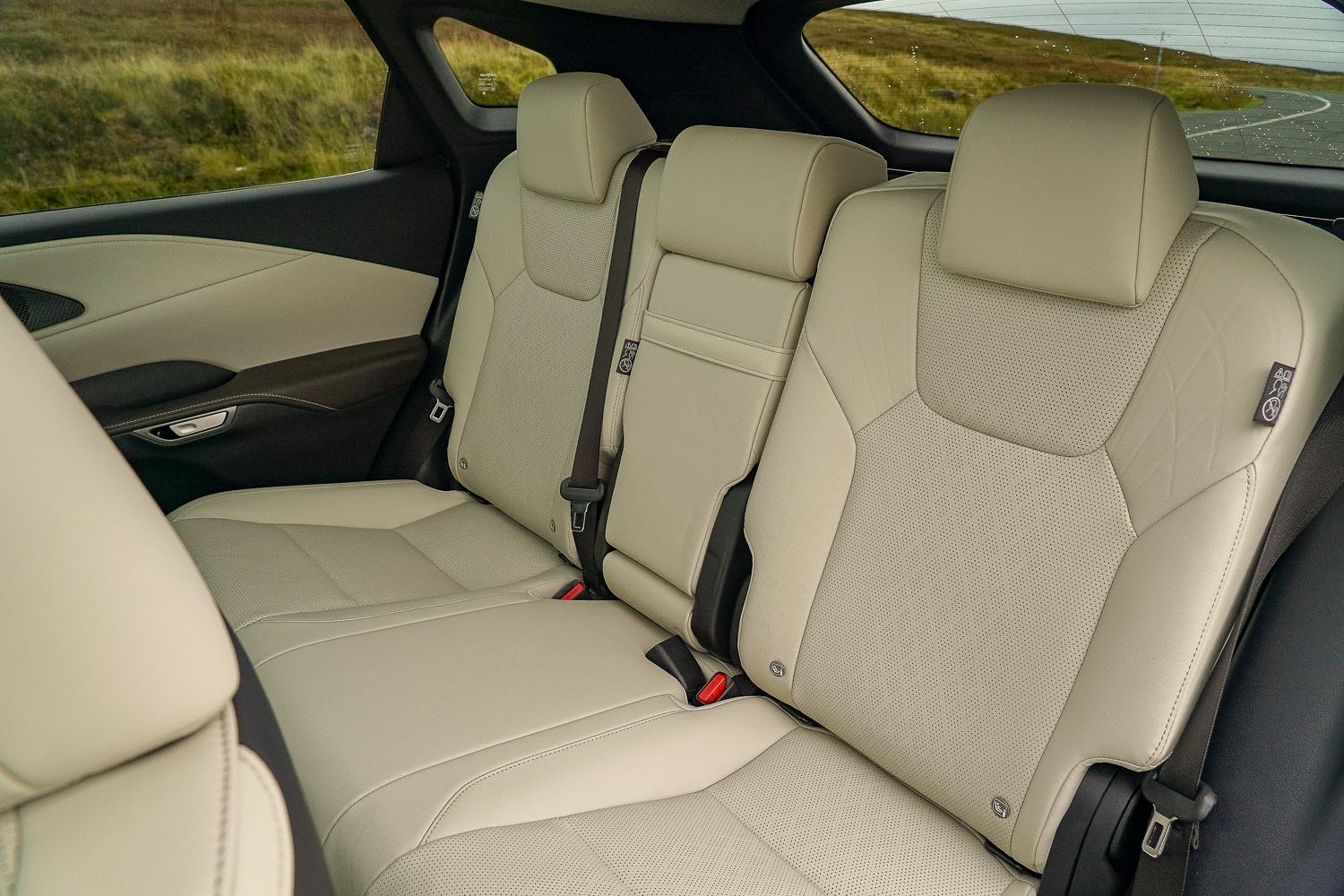
Driving the Lexus RX F Sport Design
Not so long ago, the chassis of a Lexus RX was dramatically biased towards the comfort side of the control-comfort spectrum, in complete contrast to the German alternatives. The current one strikes a better balance, meaning it never wallows about or feels ‘loose’ or soft or uncontrolled on the road, though it’s still very comfortable. The F Sport Design doesn’t change that as there have been no suspension tweaks, and the alloy wheels are of the same size as those on other versions of the RX, too.
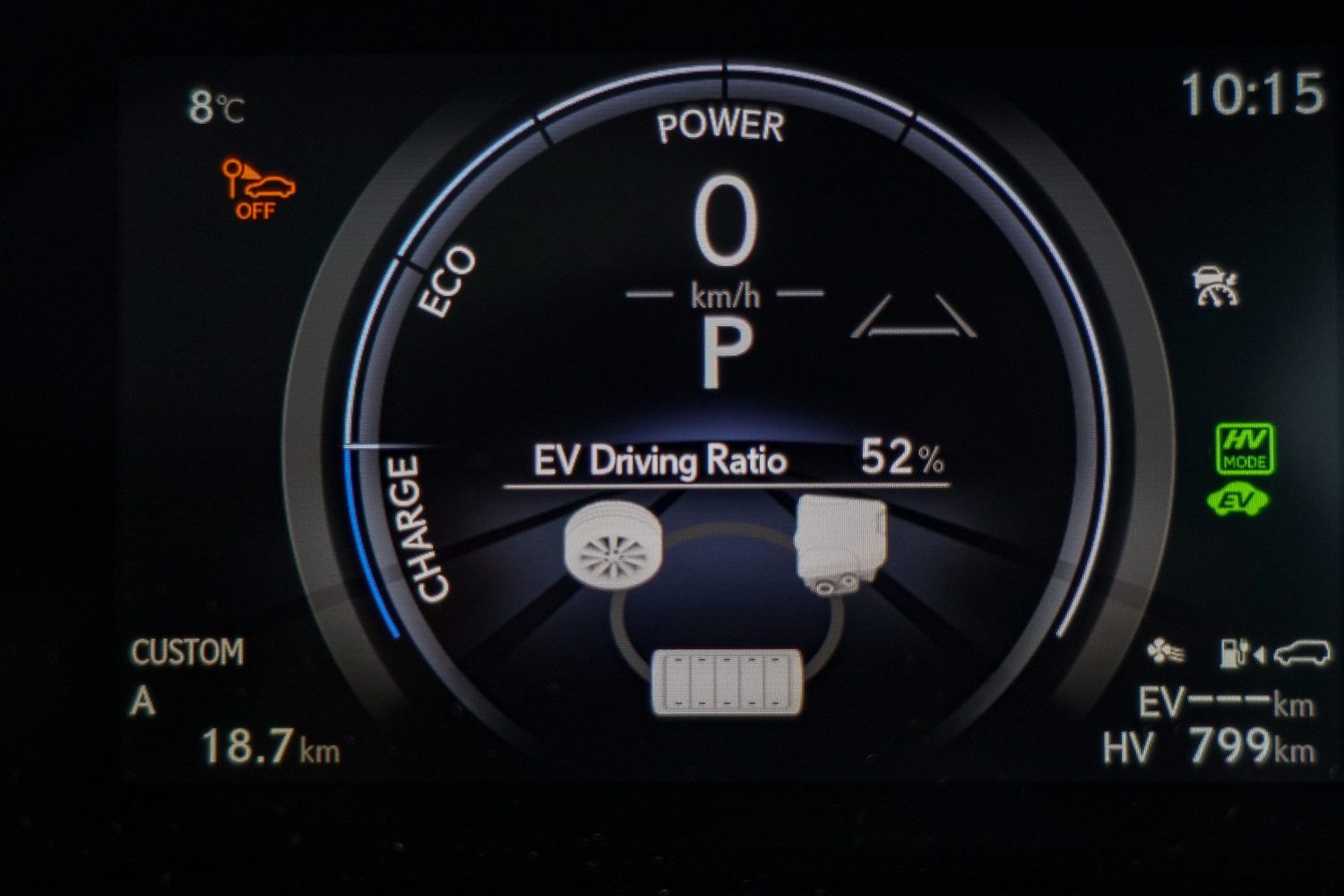
There are Eco, Normal Sport and Custom driving modes, though they only alter the power steering, air conditioning and response to the accelerator so we found it best left in the default (Normal) setting. Likewise, there’s little reason to ever use the gearchange paddles behind the steering wheel. The RX is at its best at a cruise on the motorway - in which it’s beautifully quiet - or ambling around town - when it’s more often than not doing without the petrol engine completely.
How safe is the Lexus RX?
When this generation of the RX was tested by the Euro NCAP organisation back in 2022 it achieved the full five-star rating with individual scores of 90 per cent of adult occupant protection, 87 per cent for child occupant protection, 91 per cent for ‘Safety Assist’ and a commendable 89 per cent for protection of vulnerable road users.
The latter is likely to be down to the Lexus Safety System+ suite of features, now in its third generation. Included in all models are a pre-crash system with driver-monitoring camera, blind-spot monitoring, Lane Trace Assist, lane-change assist, Safe Exit Assist and adaptive cruise control.
What’s the electric range of the Lexus RX 450h+?
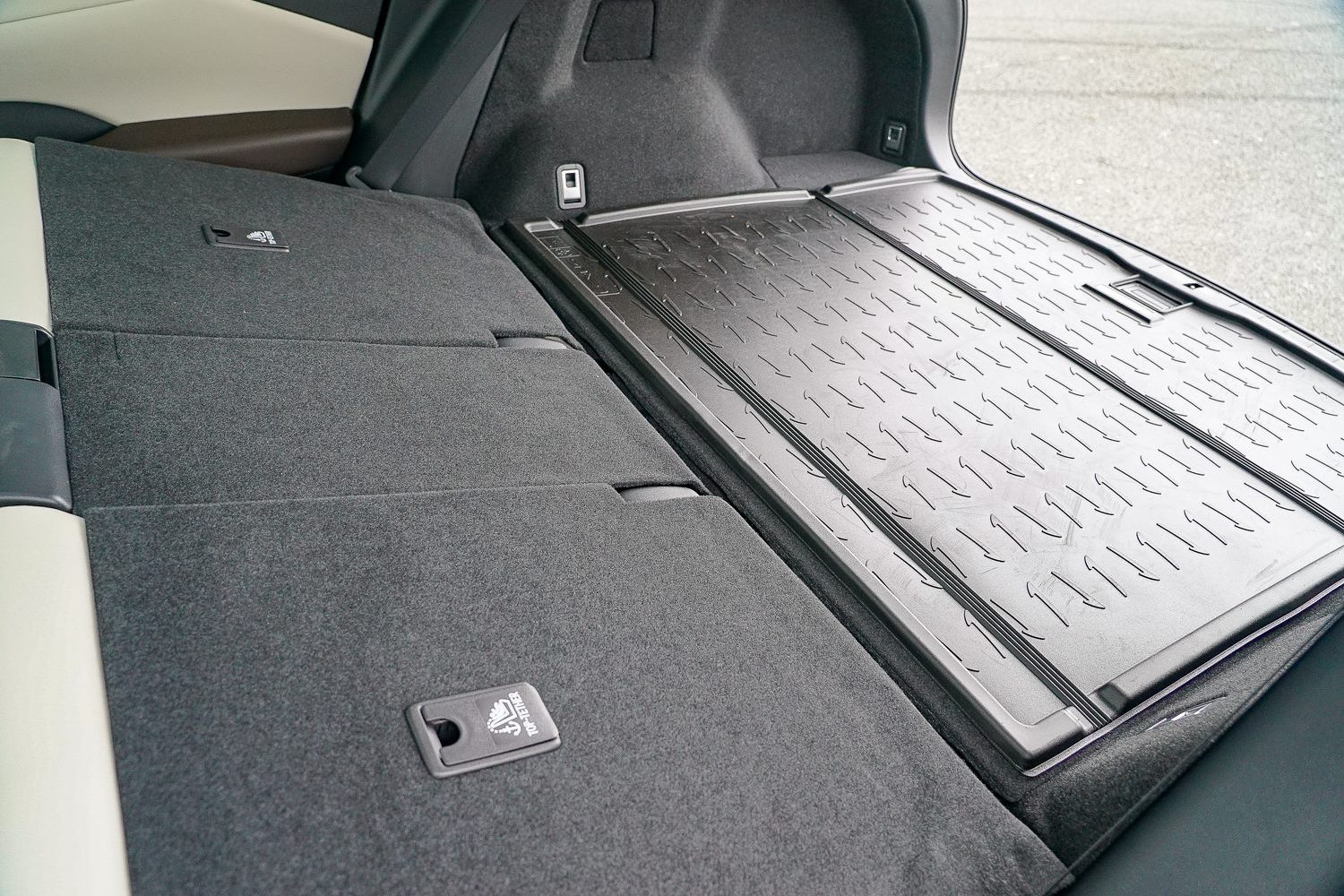
Thanks to its 18.1kWh battery pack, the RX 450h+’s official electric range is a useful 67km, which is achievable if you’re at town speeds. Figure on somewhere between 40- and 50km if you also venture onto the motorway. On a longer journey where charging up the battery from an external source is not an option, you should still manage an impressive 6.5 litres/100km in our experience.
Unfortunately, the RX can’t make use of fast DC chargers, so its 6.6kW AC charging limit means a full battery charge in as little as 2.5 hours on a home charger.
The reasons you’d buy a Lexus RX F Sport Design
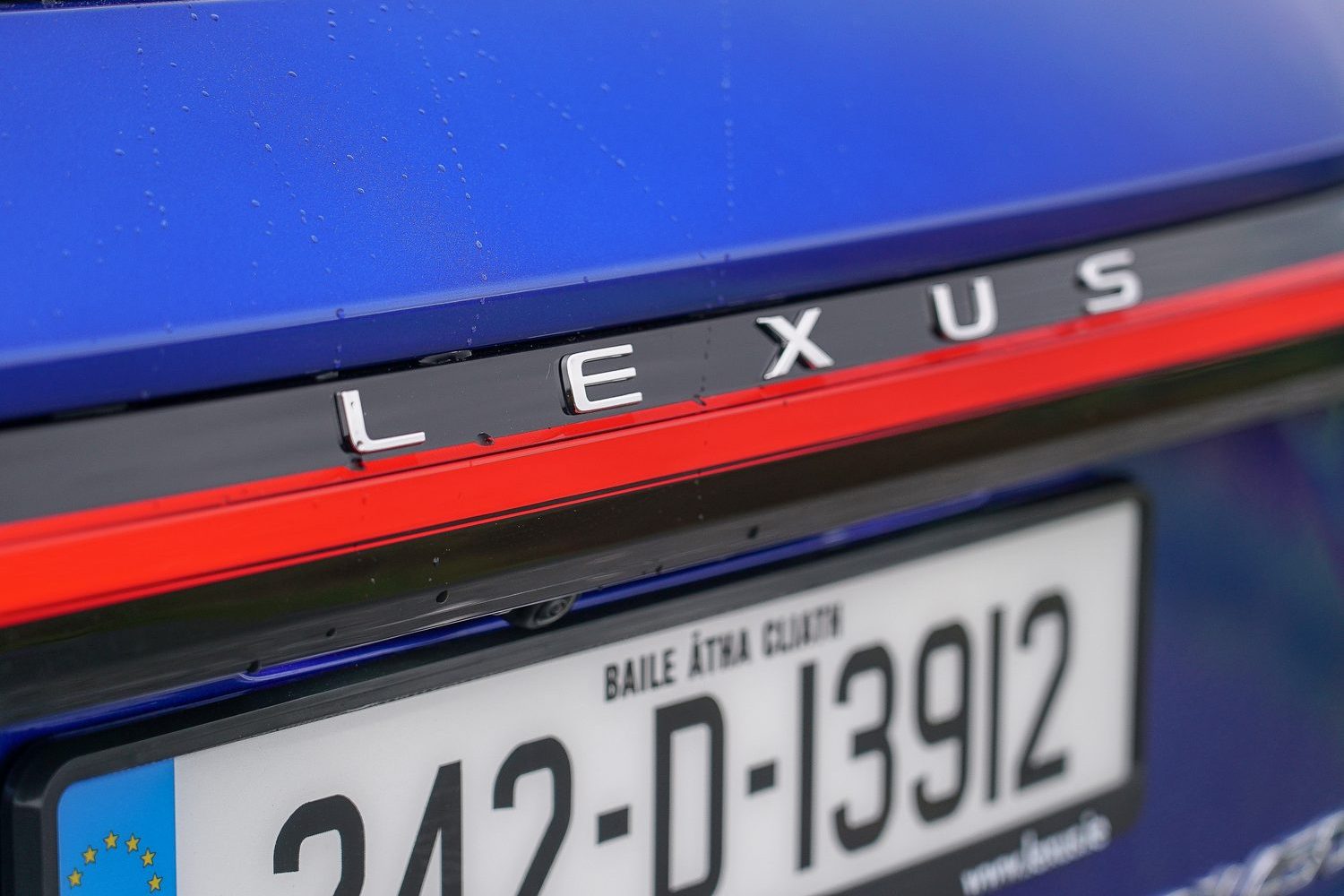
The Lexus RX 450h+ has already proven itself in terms of efficiency, luxury and quality and the F Sport Design model gives buyers that want a little more presence a new option that doesn’t sacrifice any of the car’s core values in the name of a sporting appearance.
Ask us anything about the Lexus RX
If there’s anything about the Lexus RX F Sport Design we’ve not covered, or you’d like advice in choosing between it and other cars, you can avail of our (completely free) expert advice service via the Ask Us Anything page.

